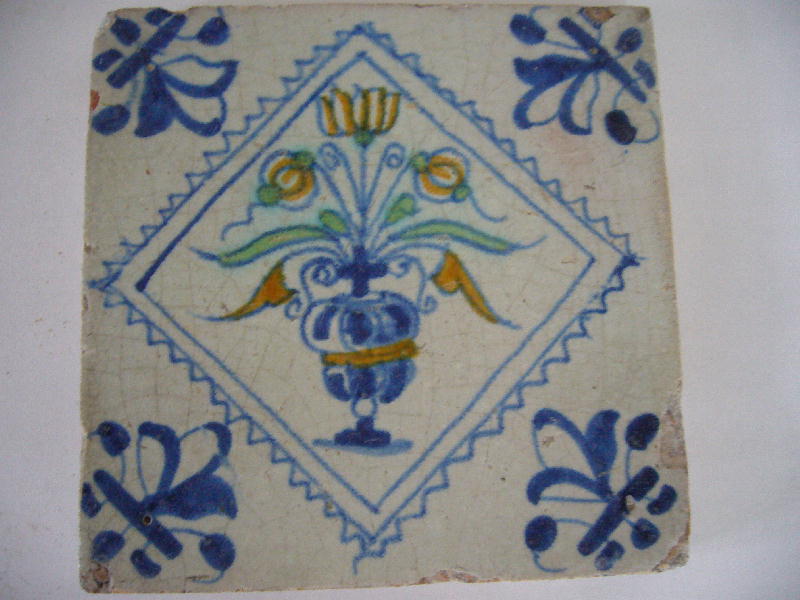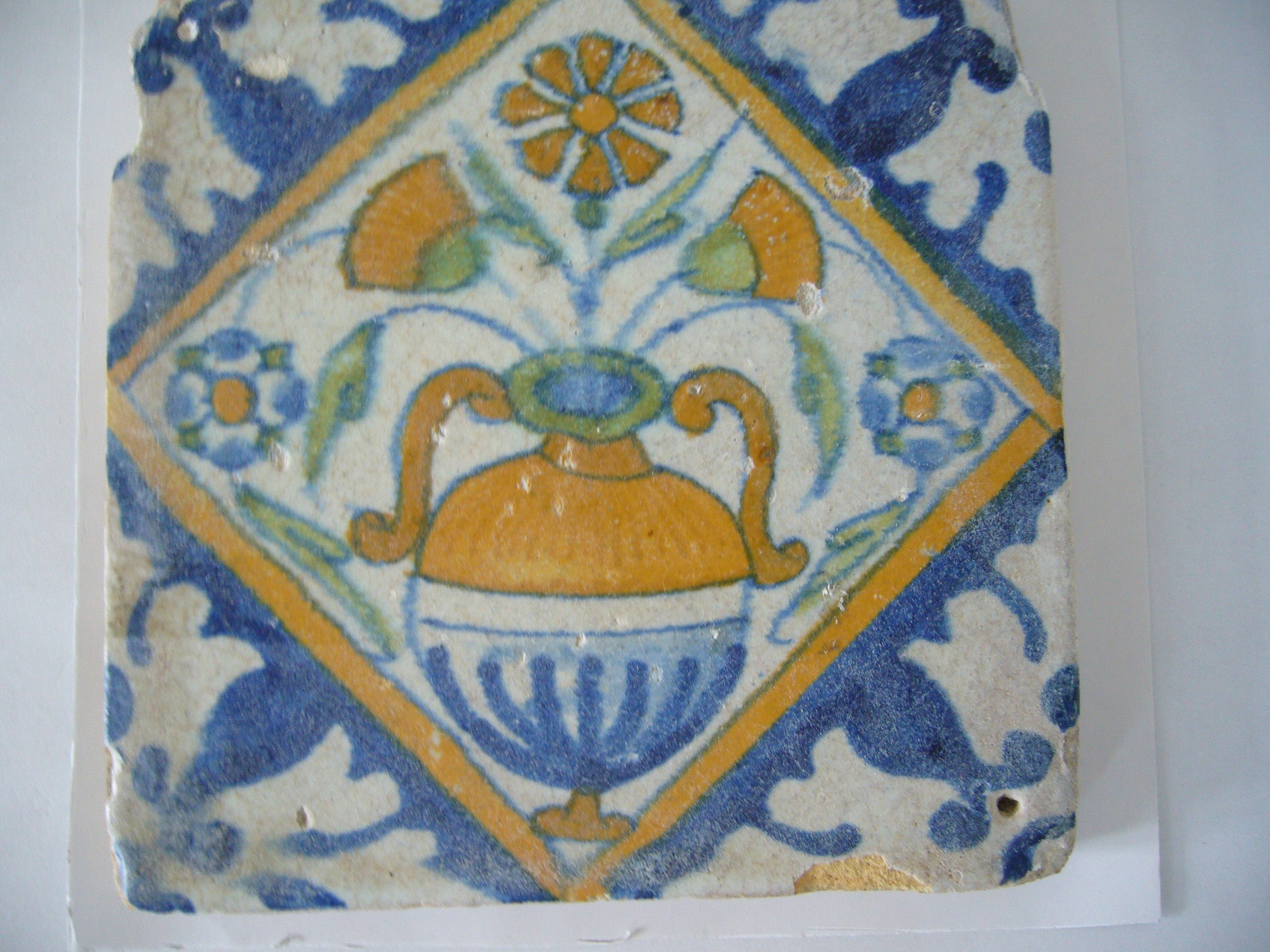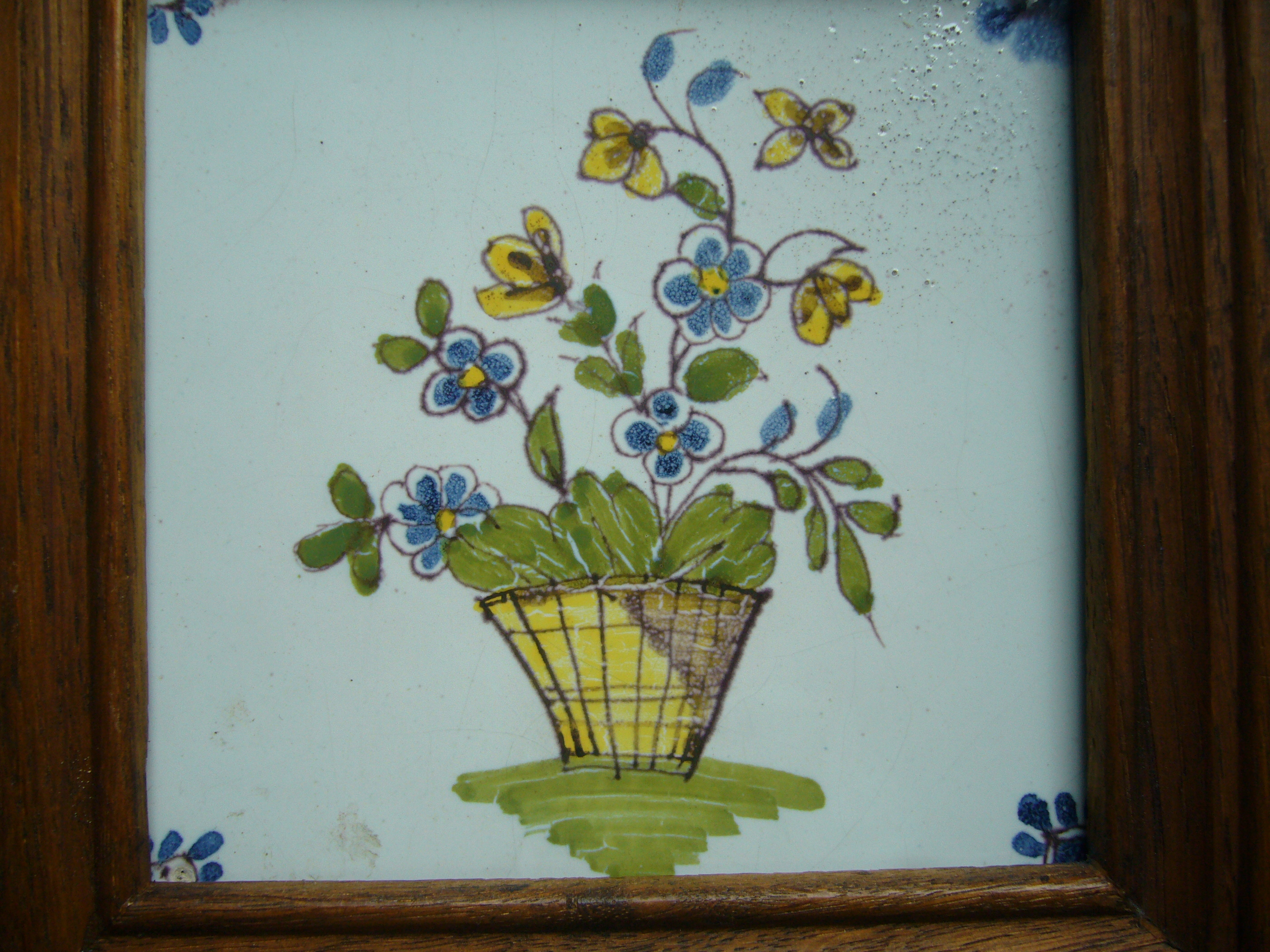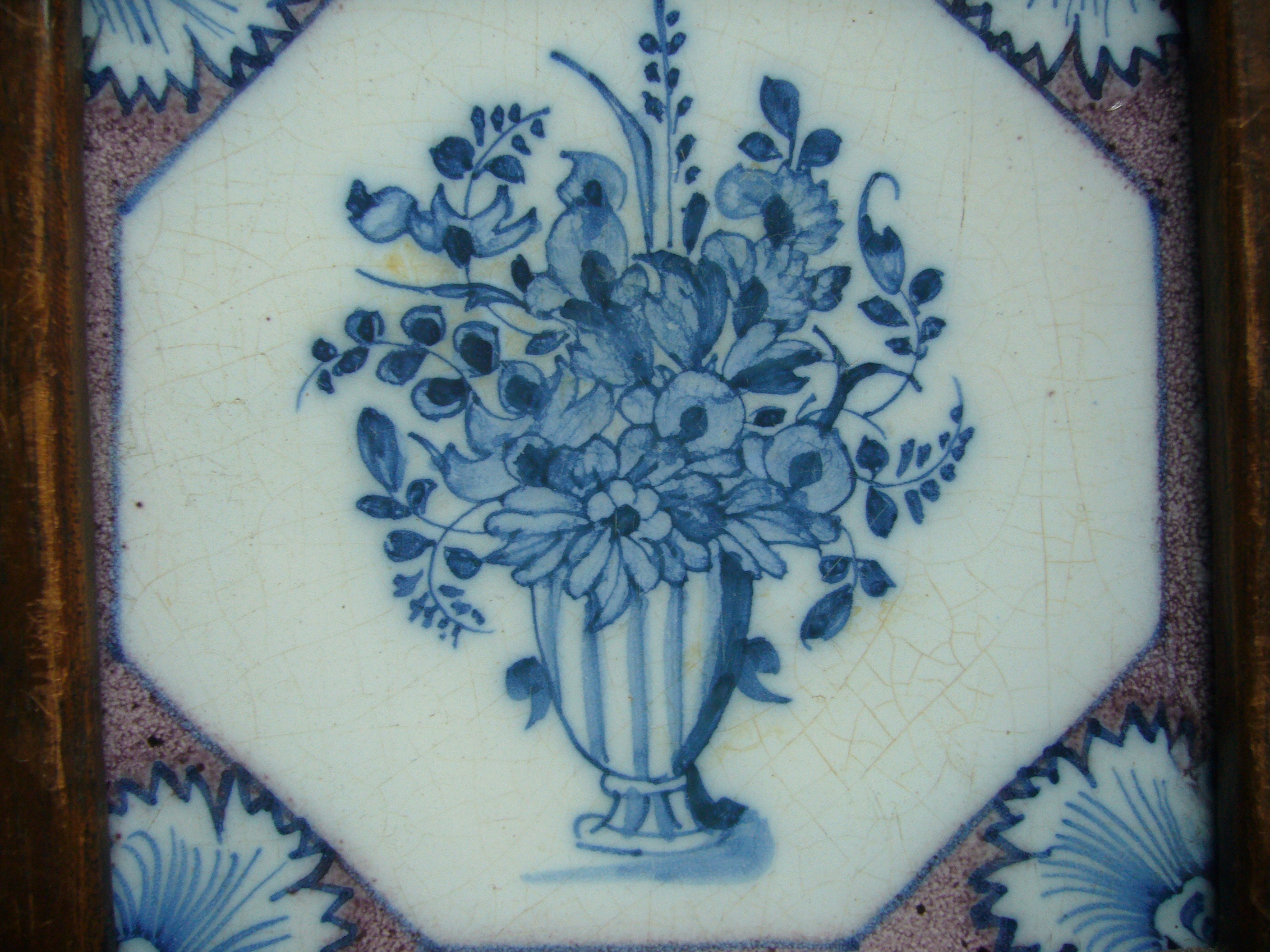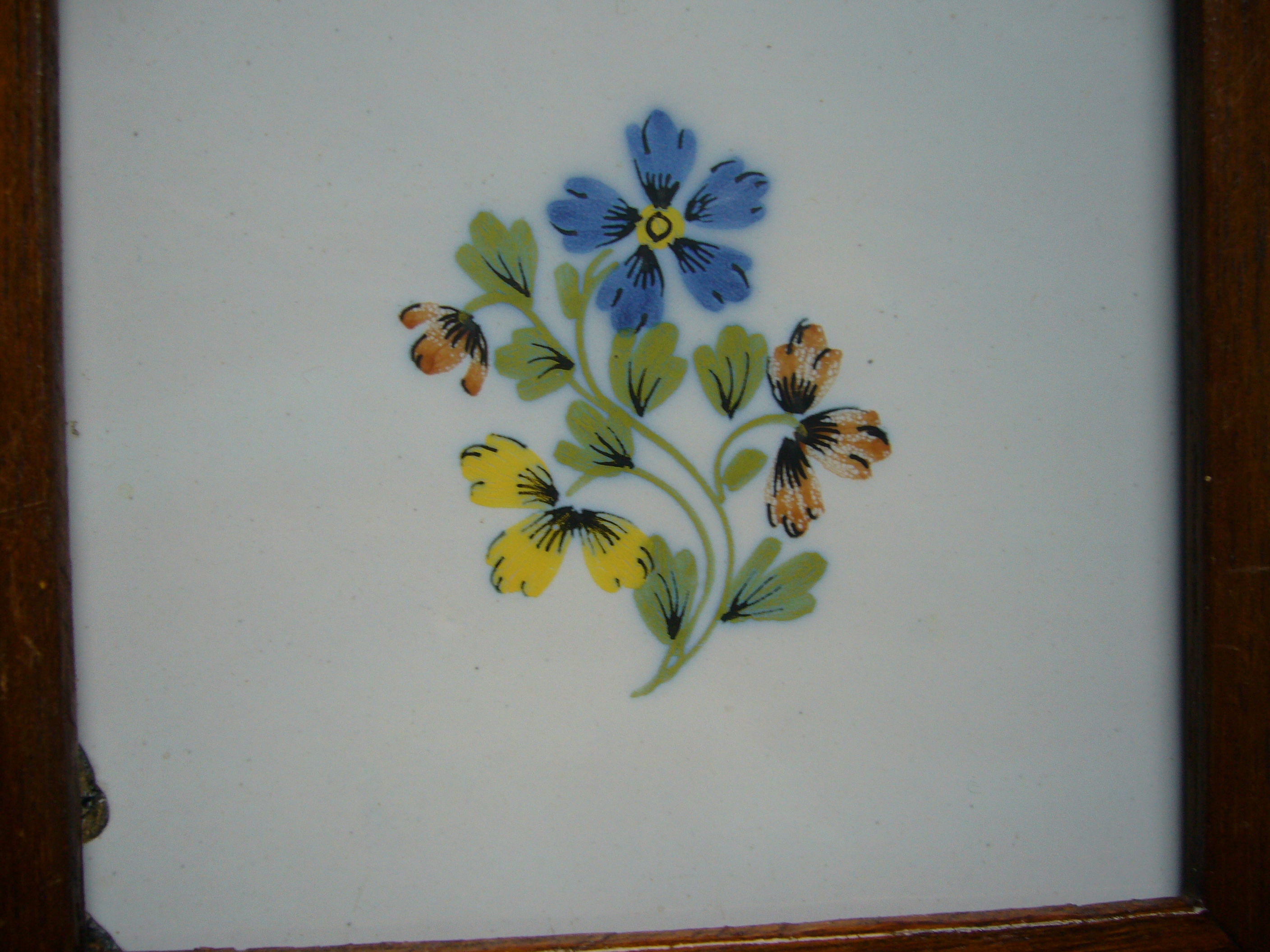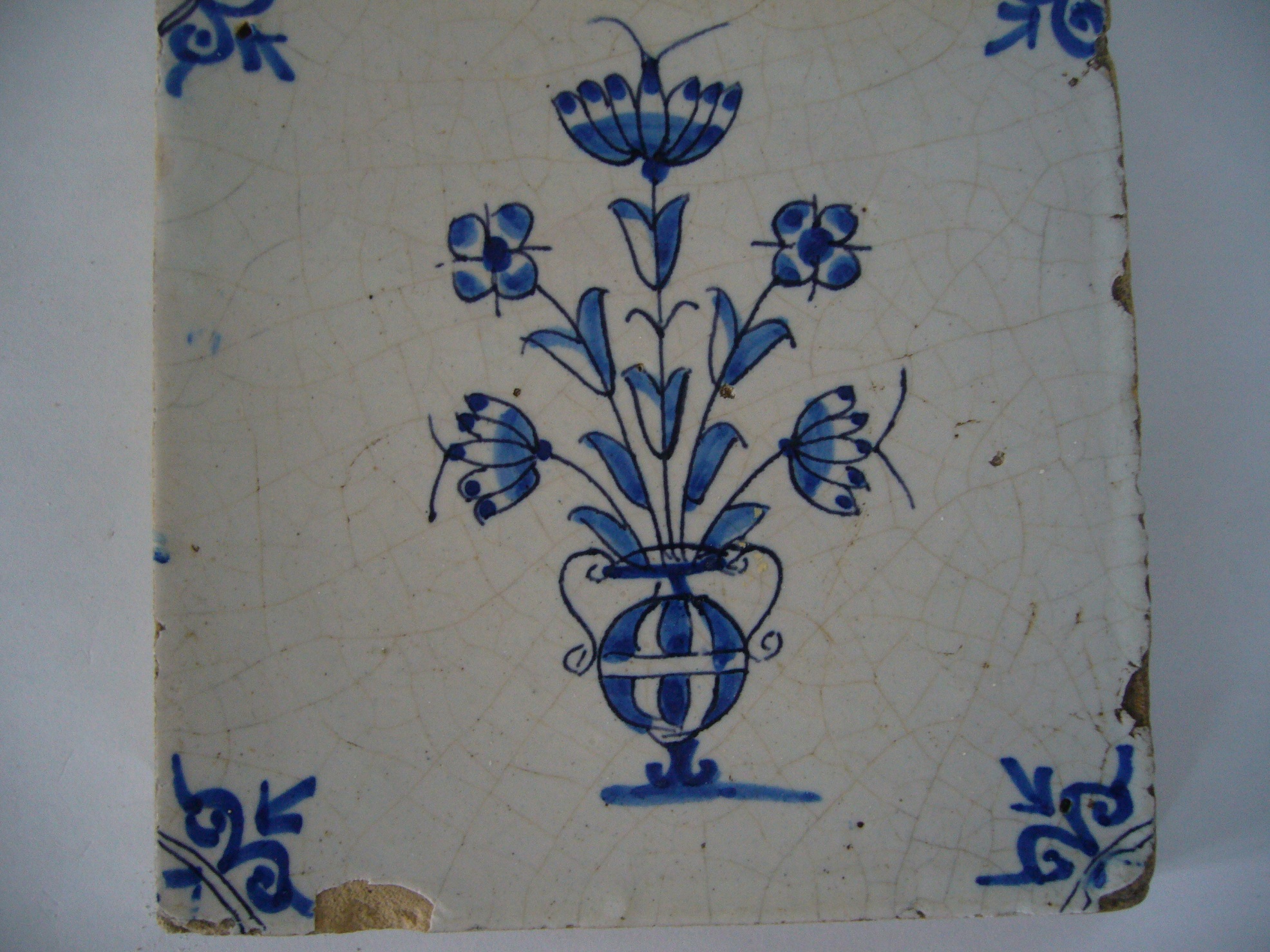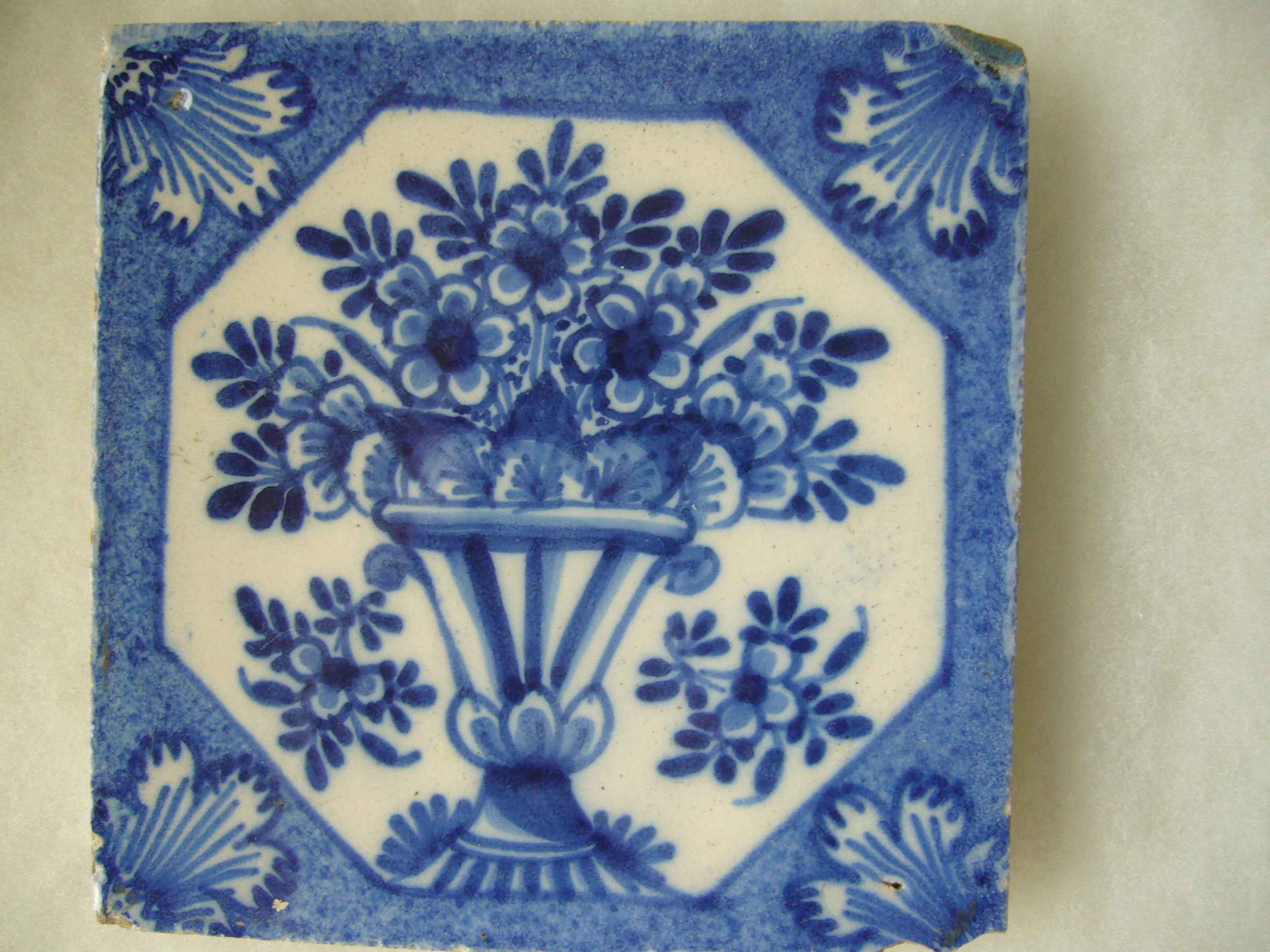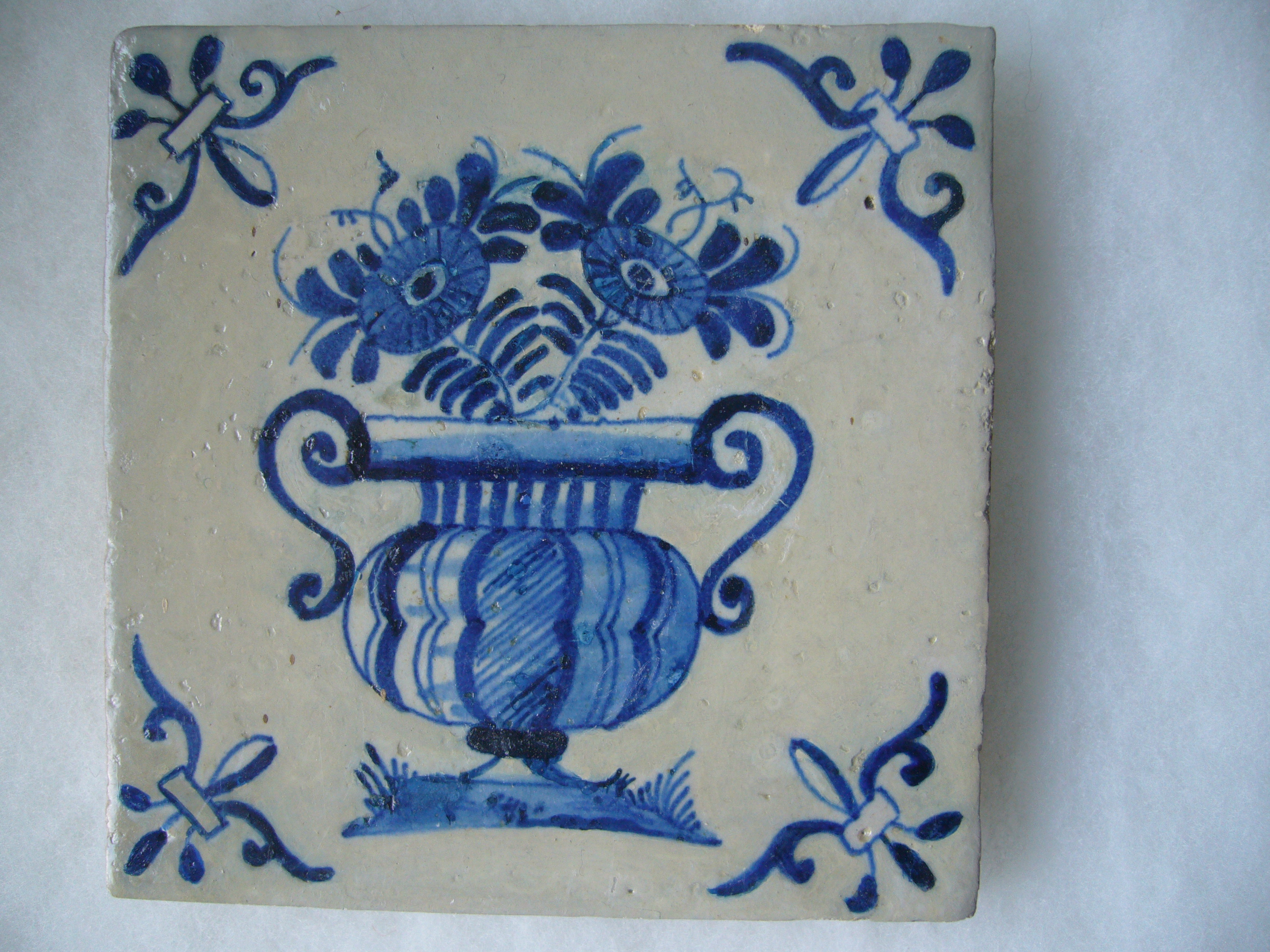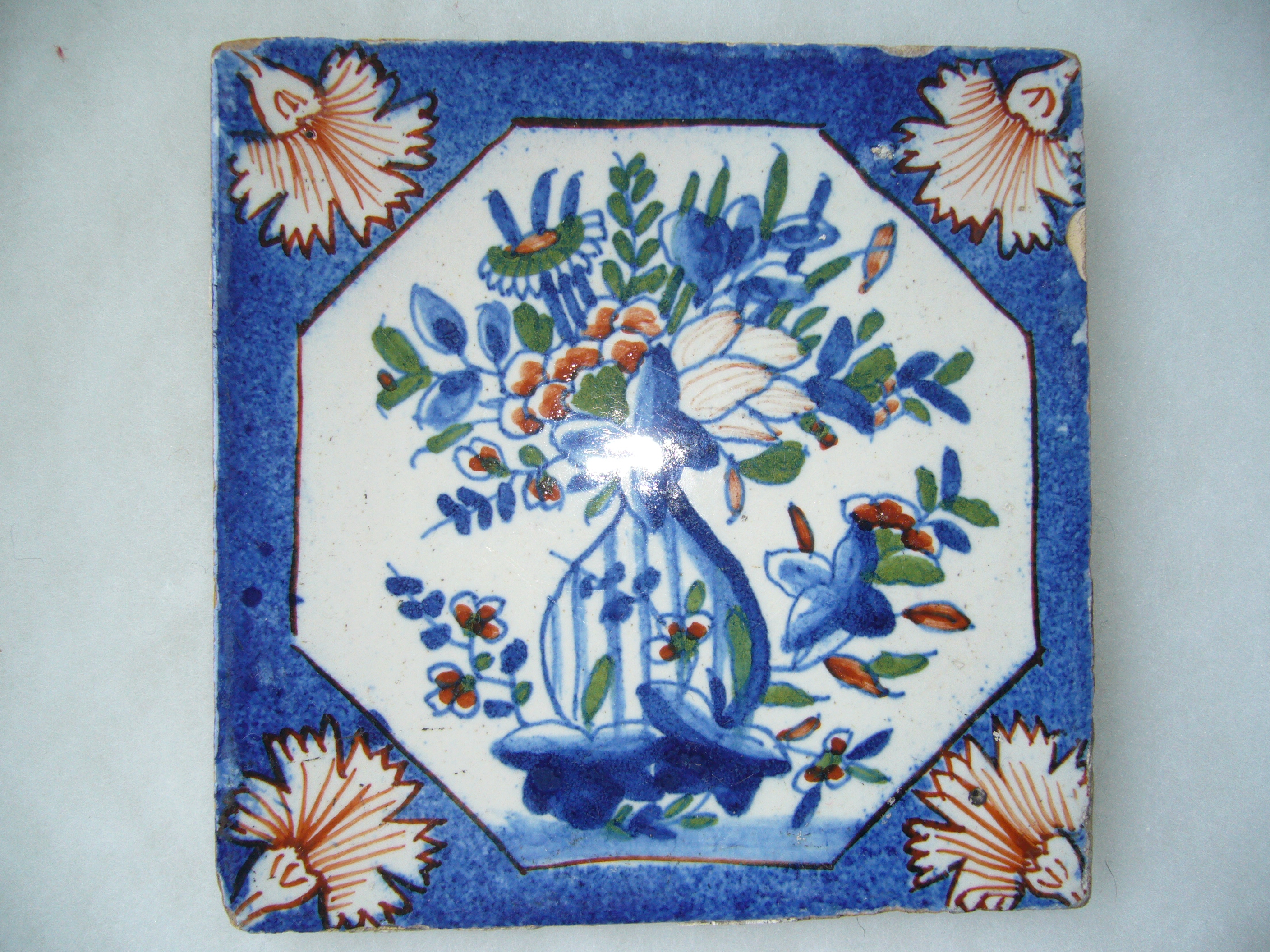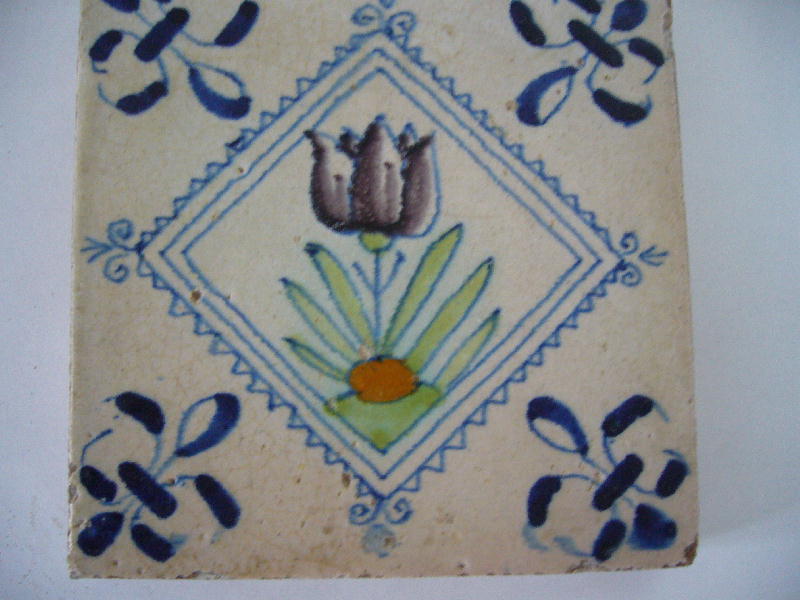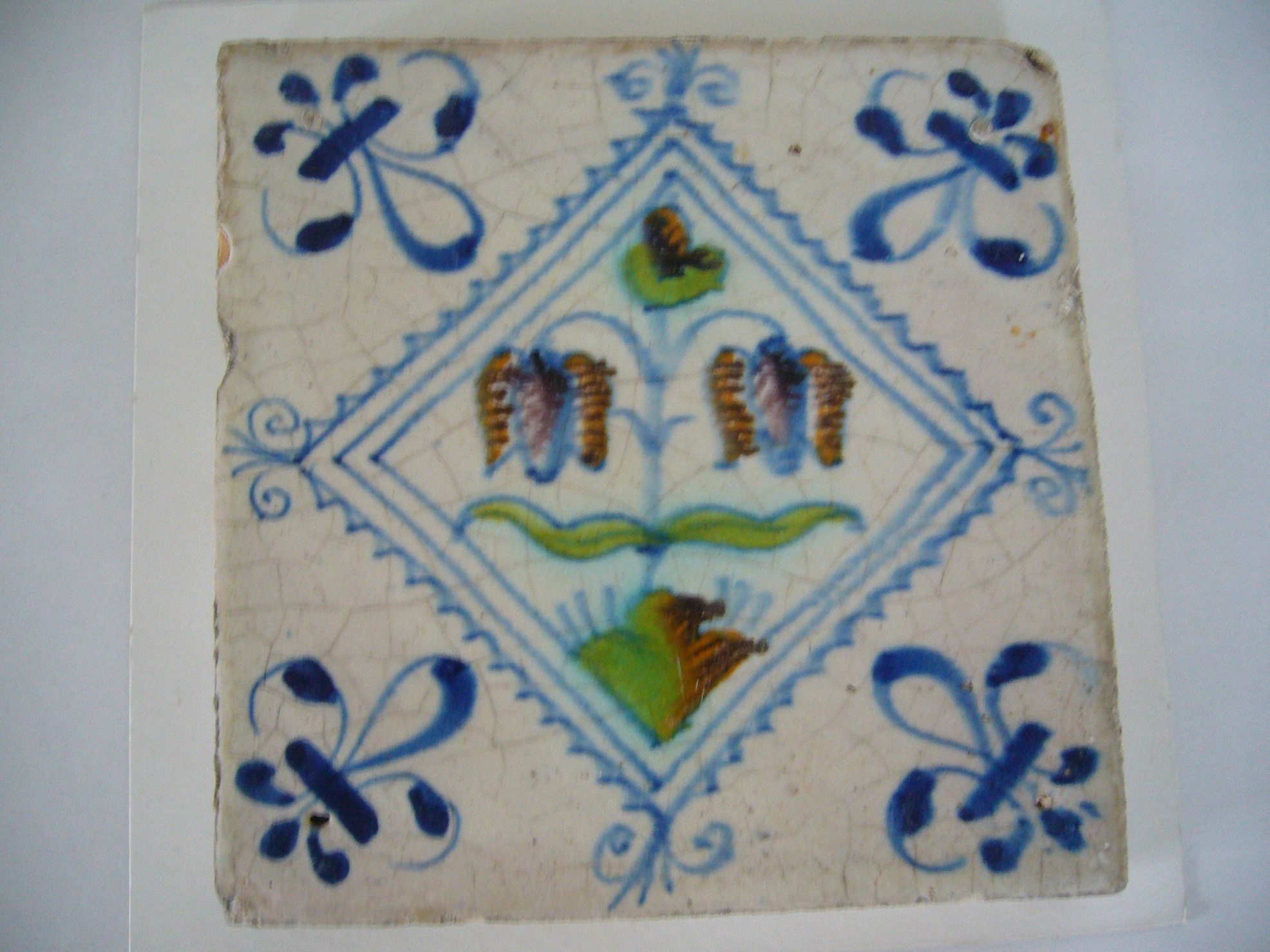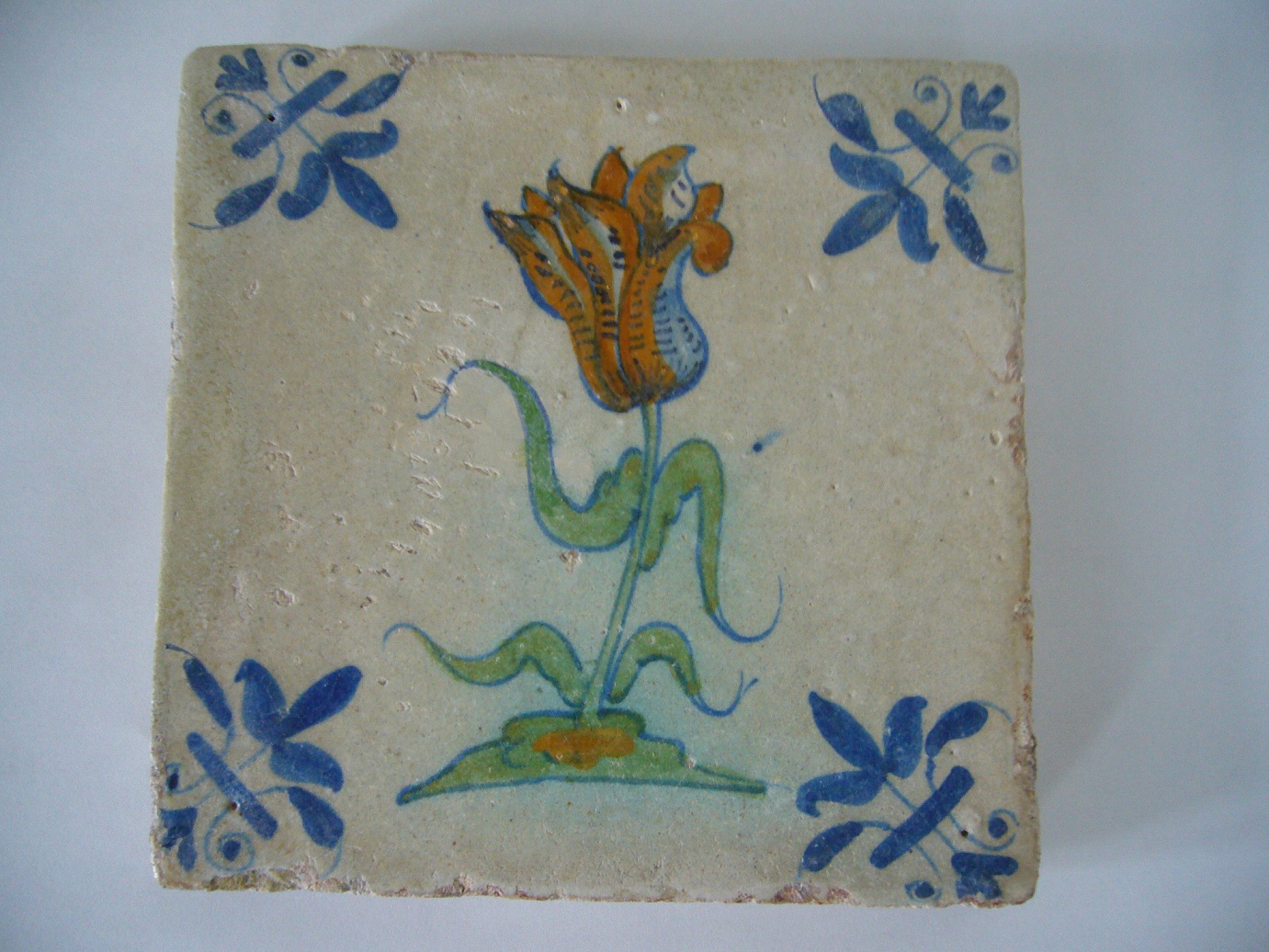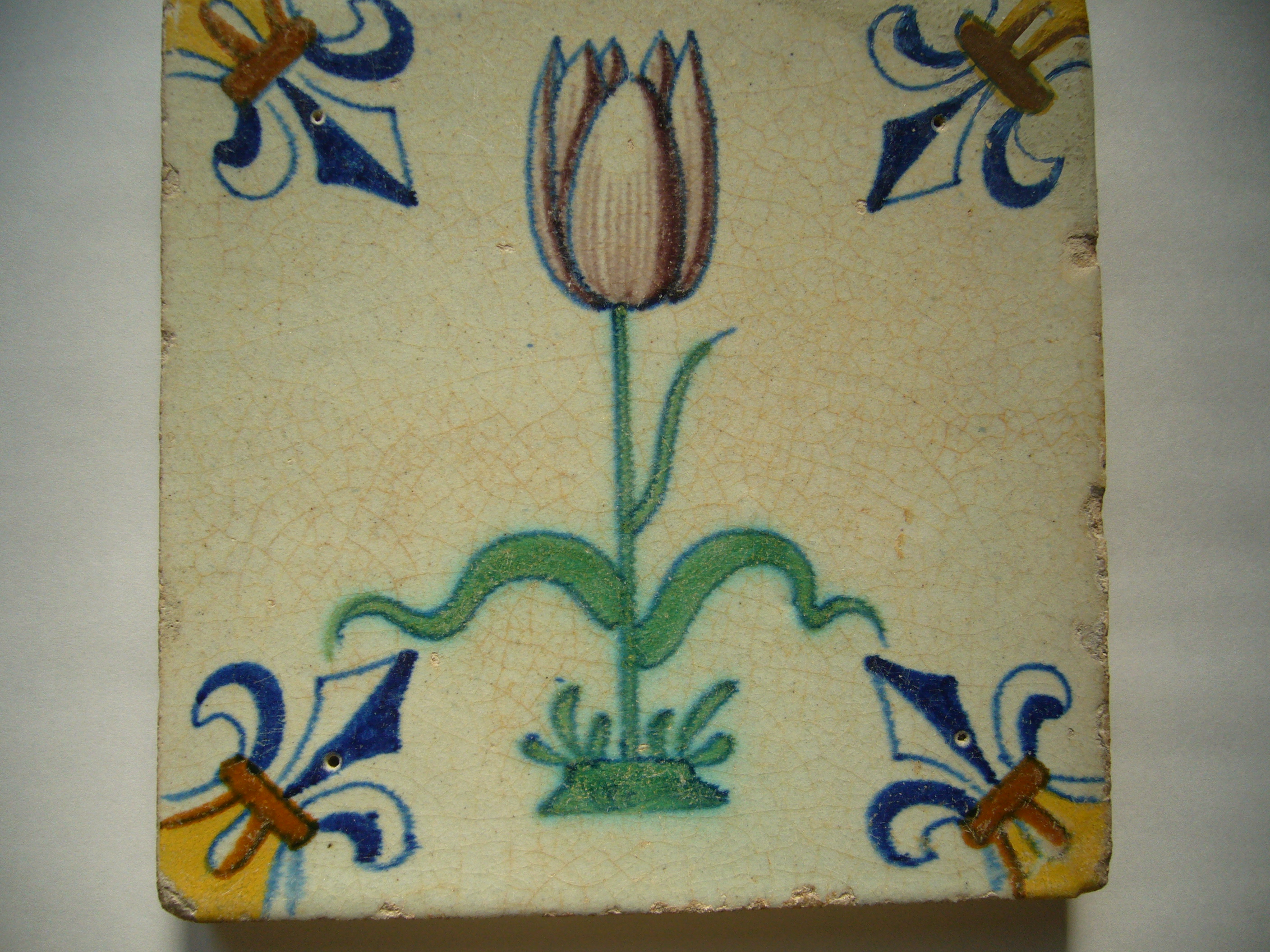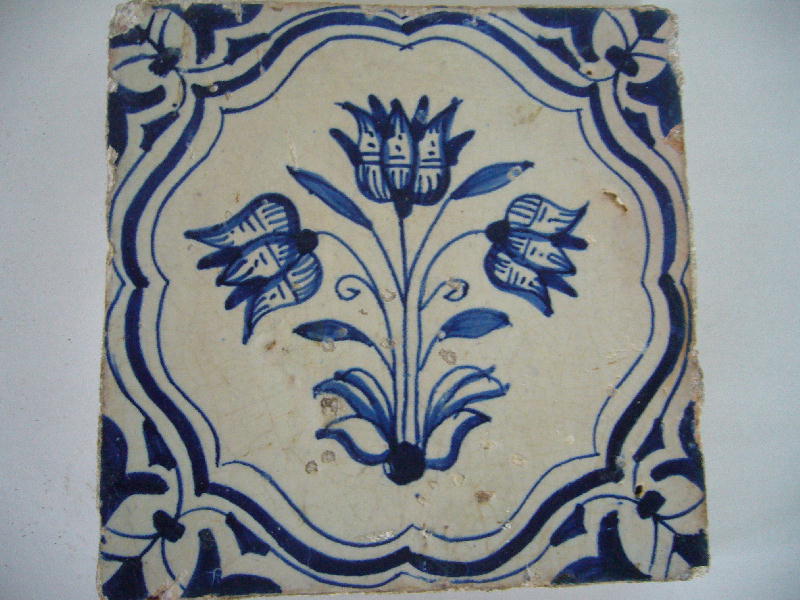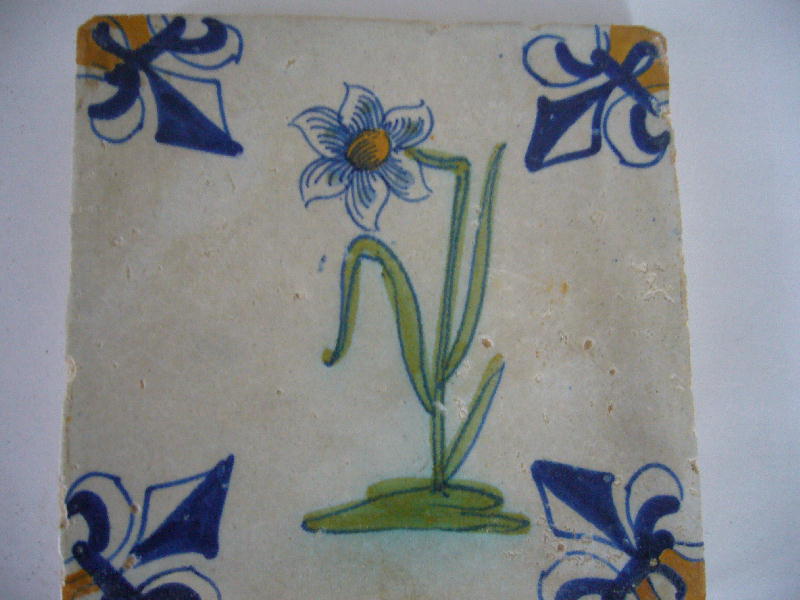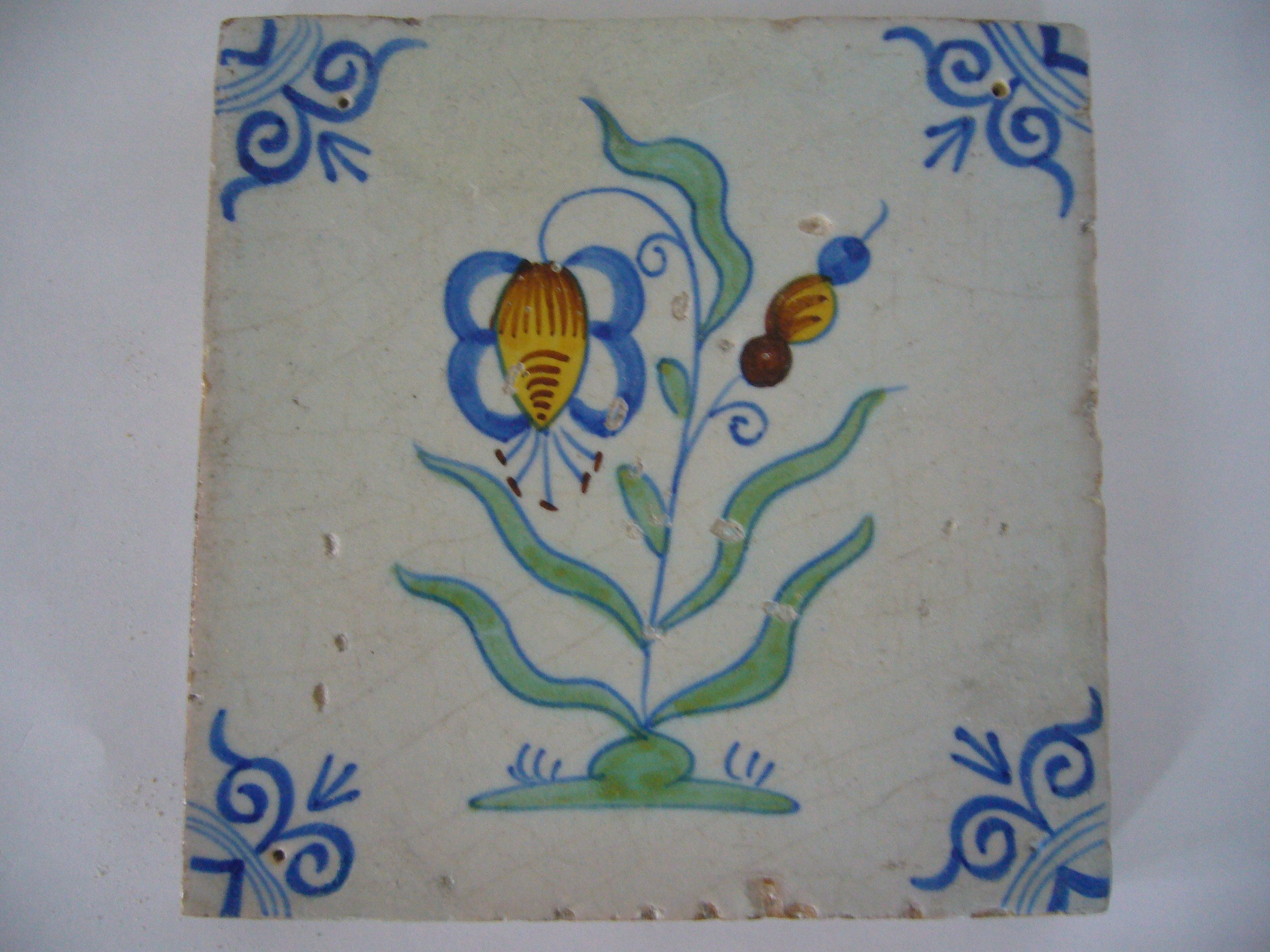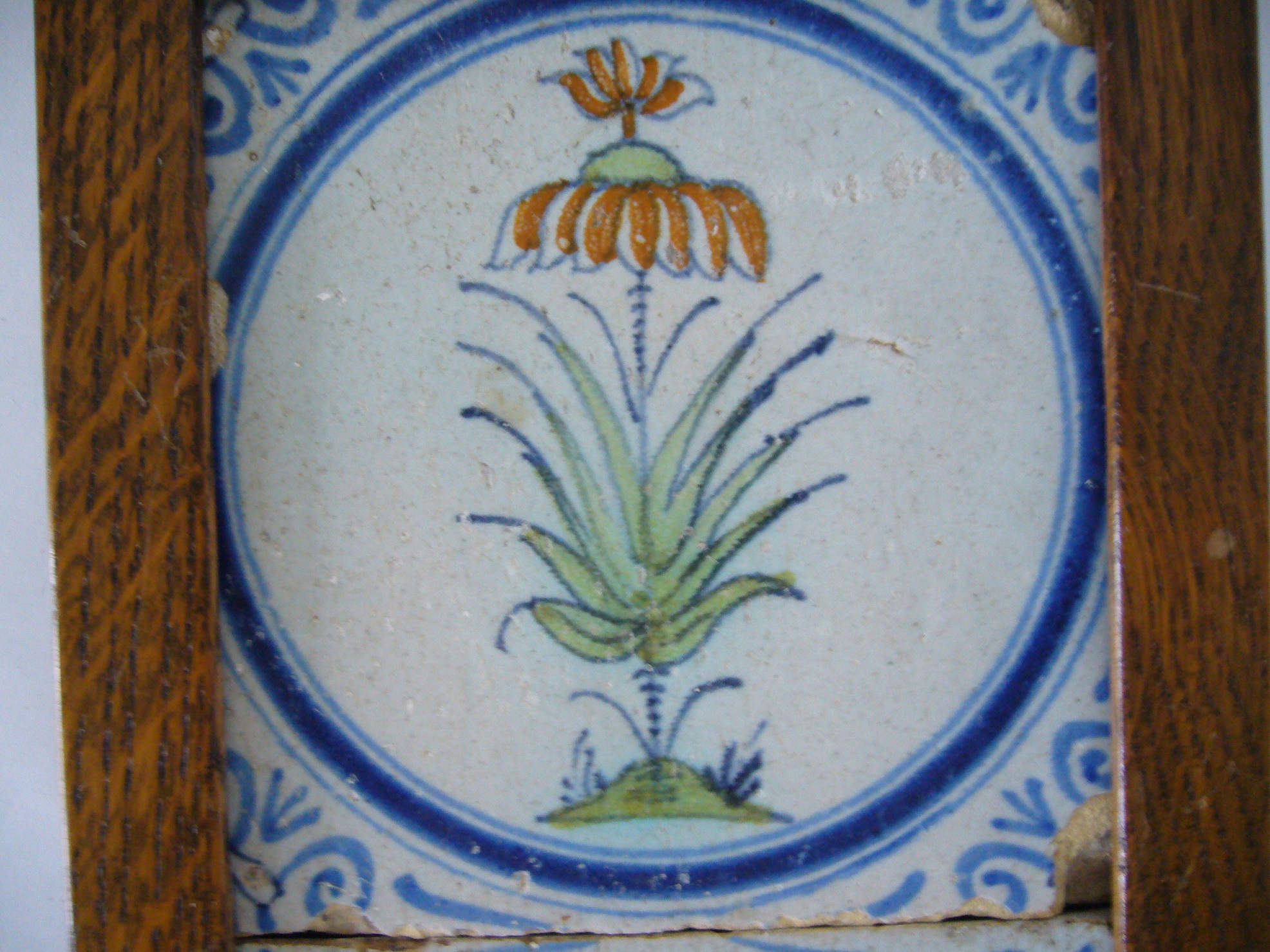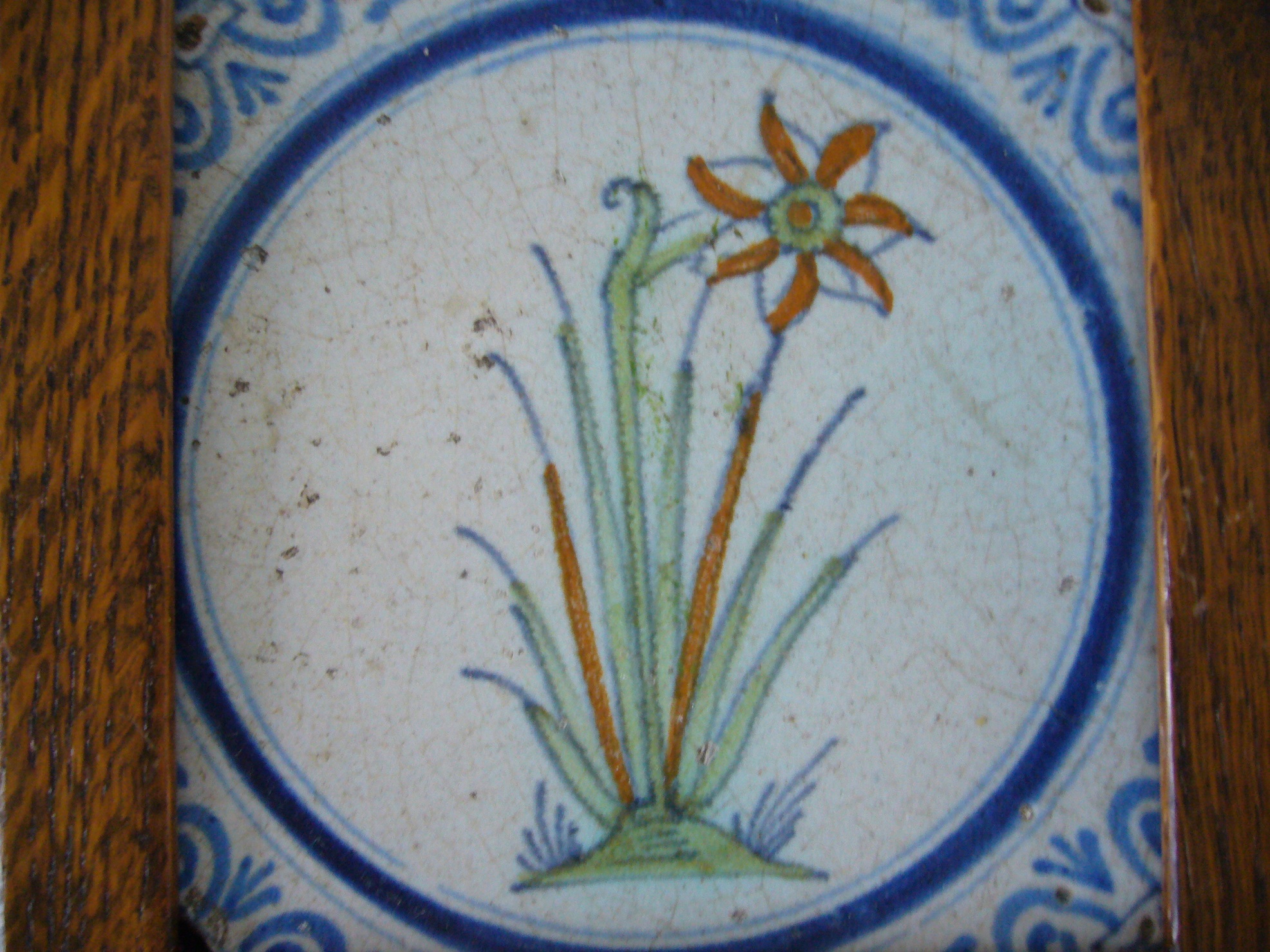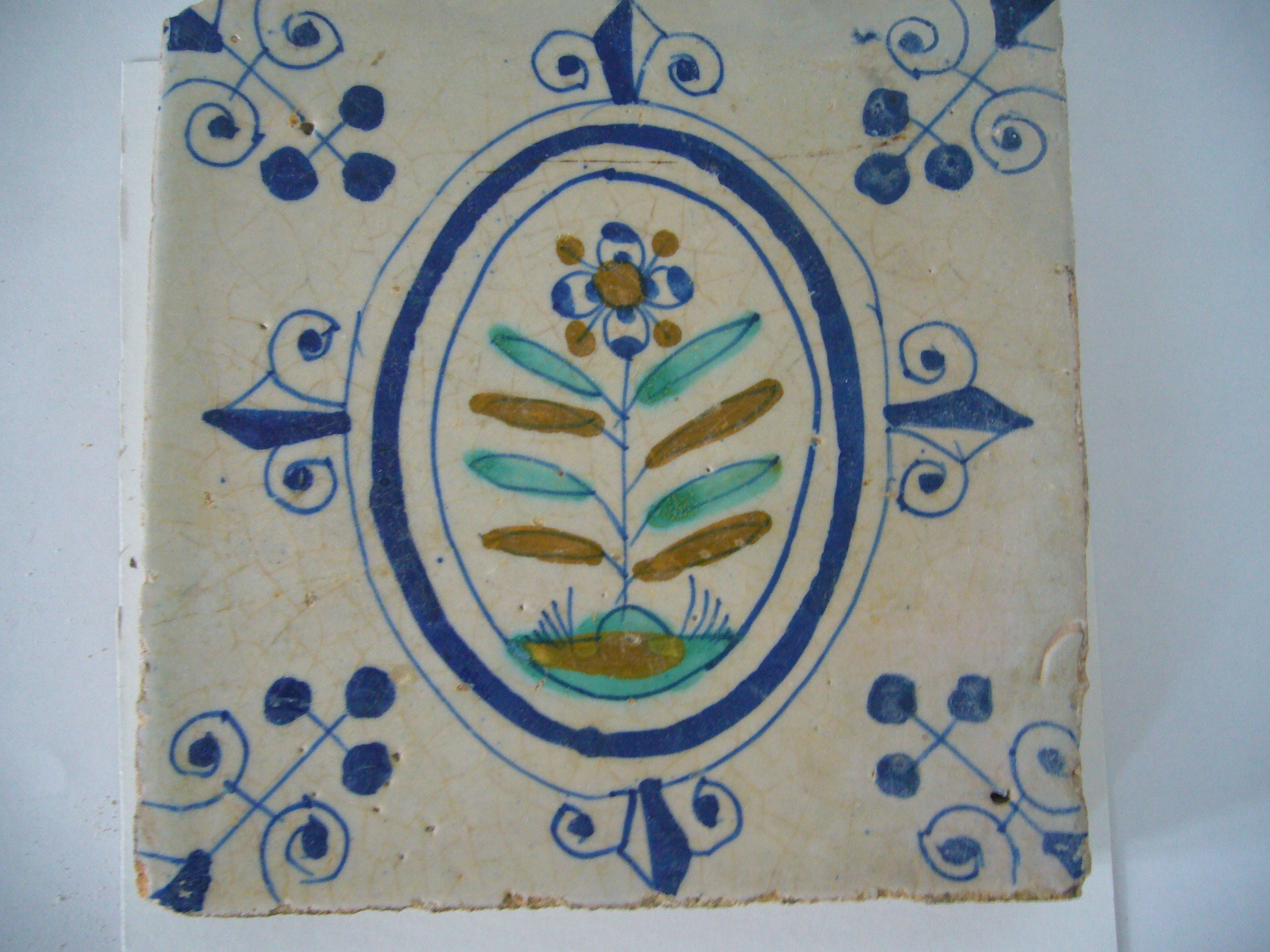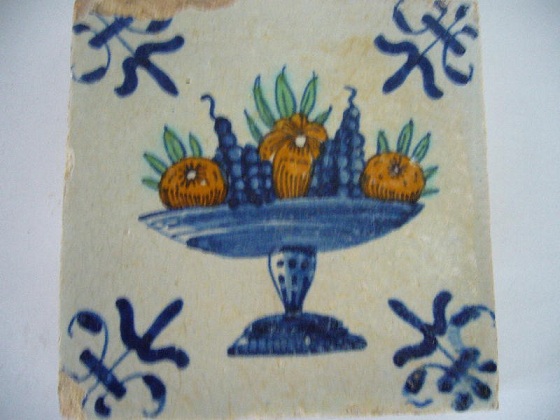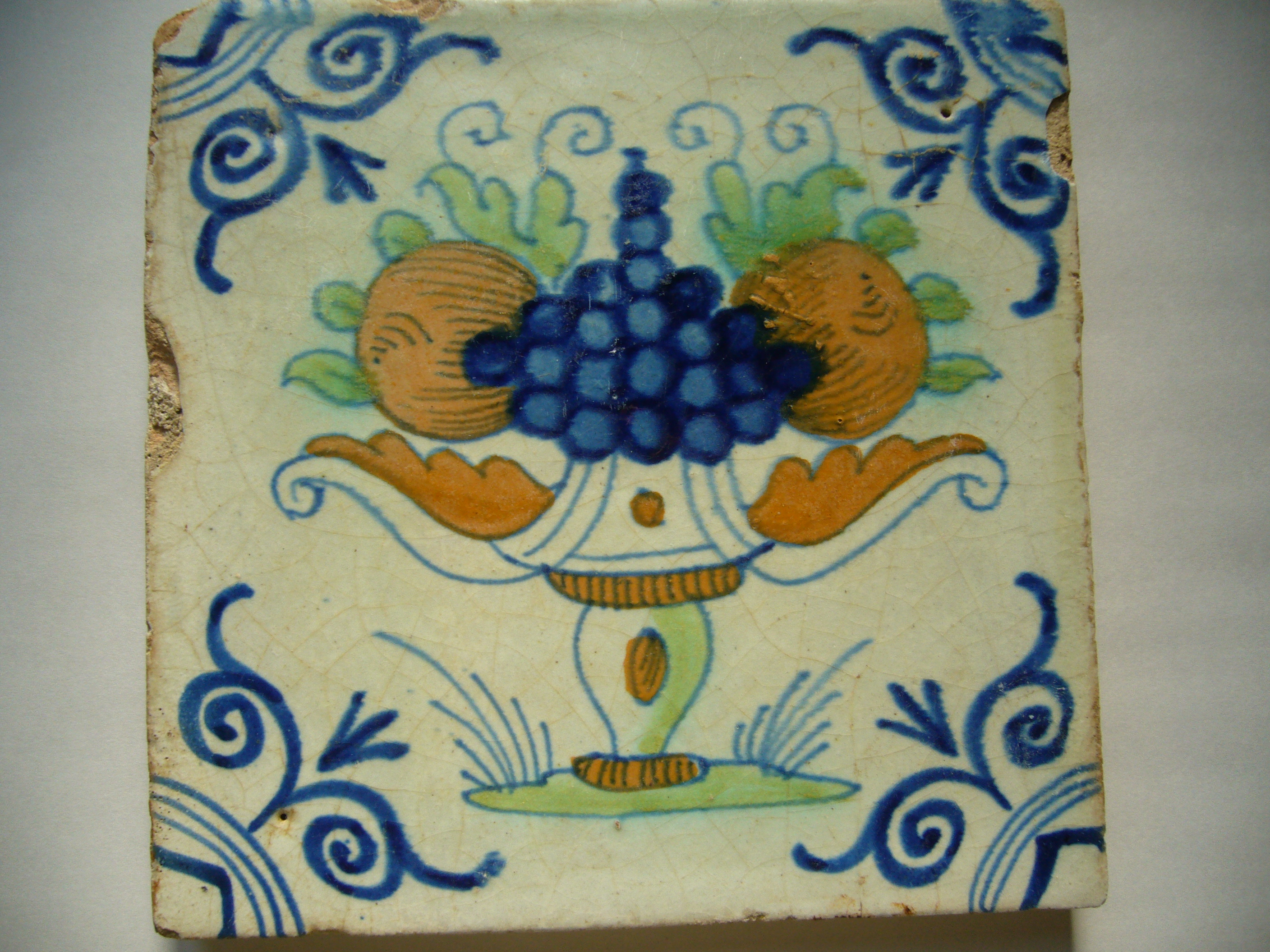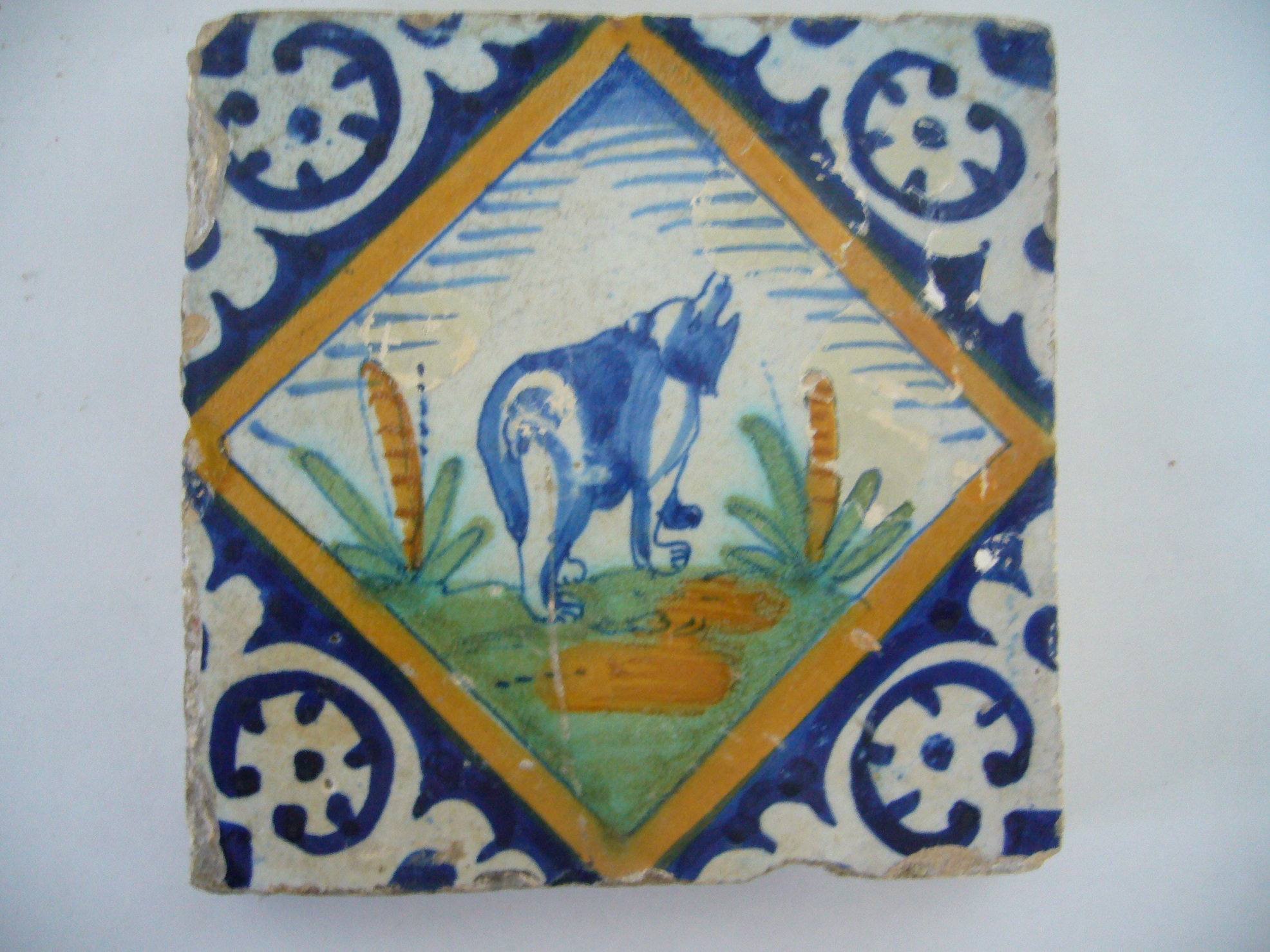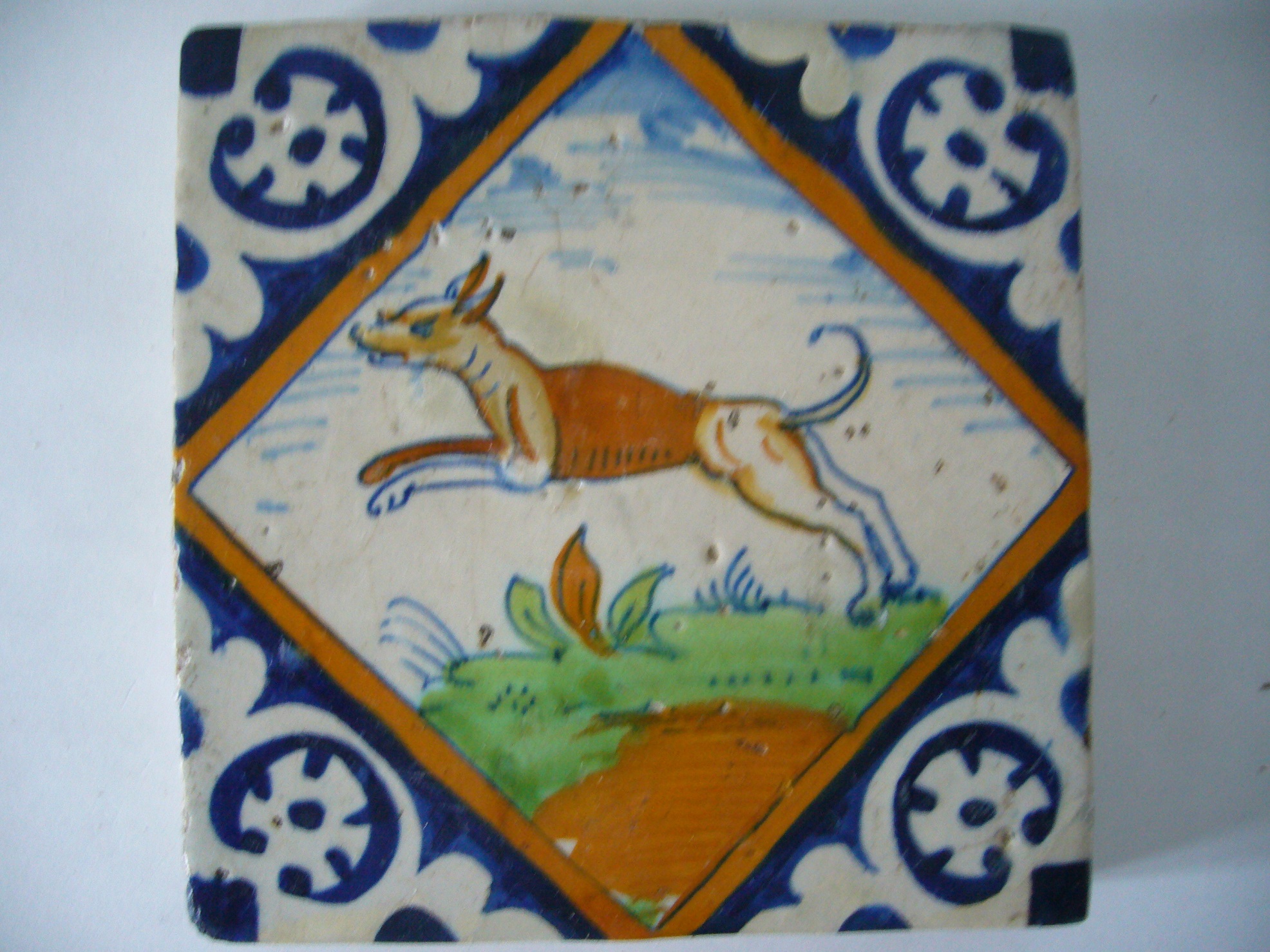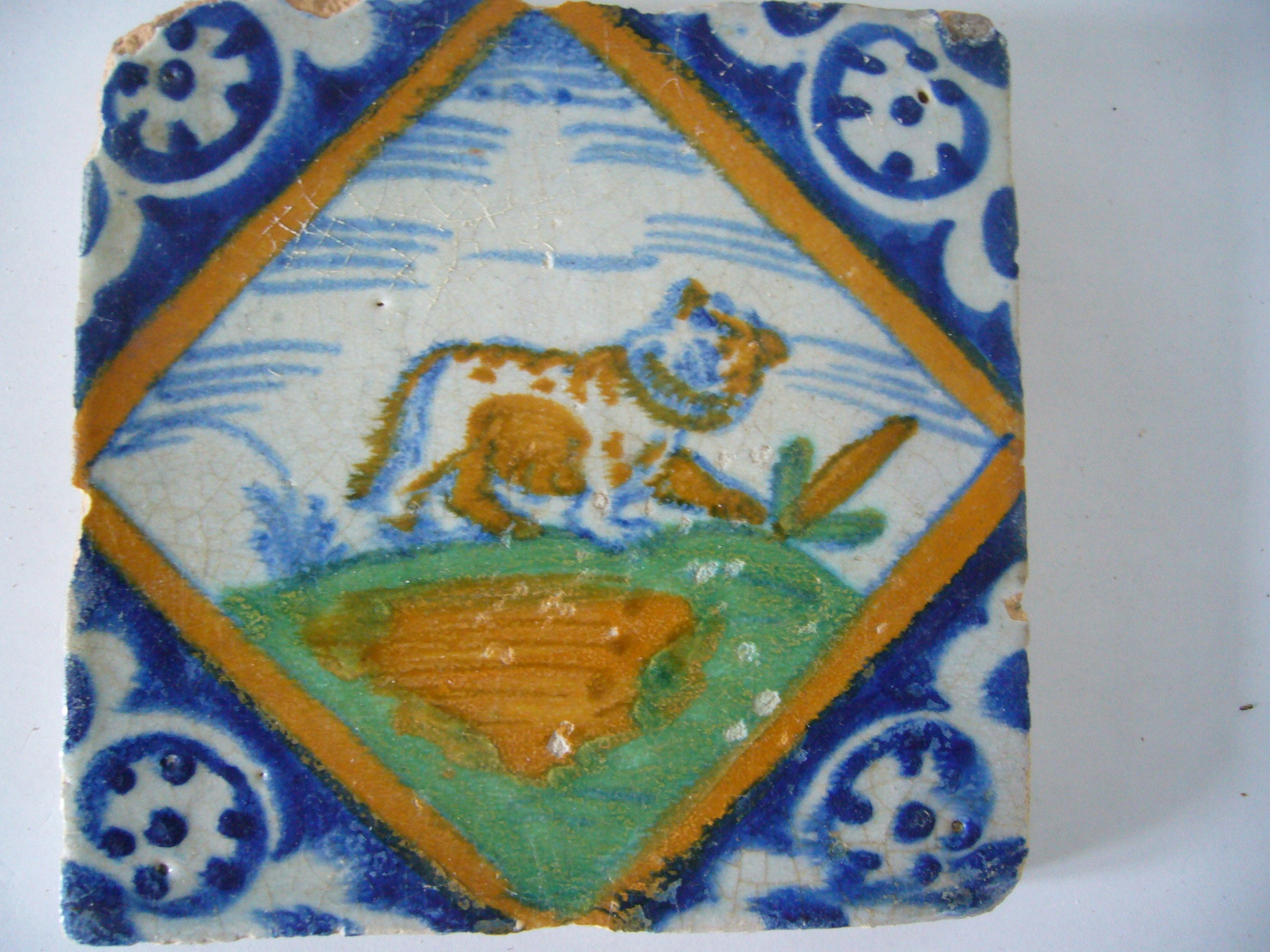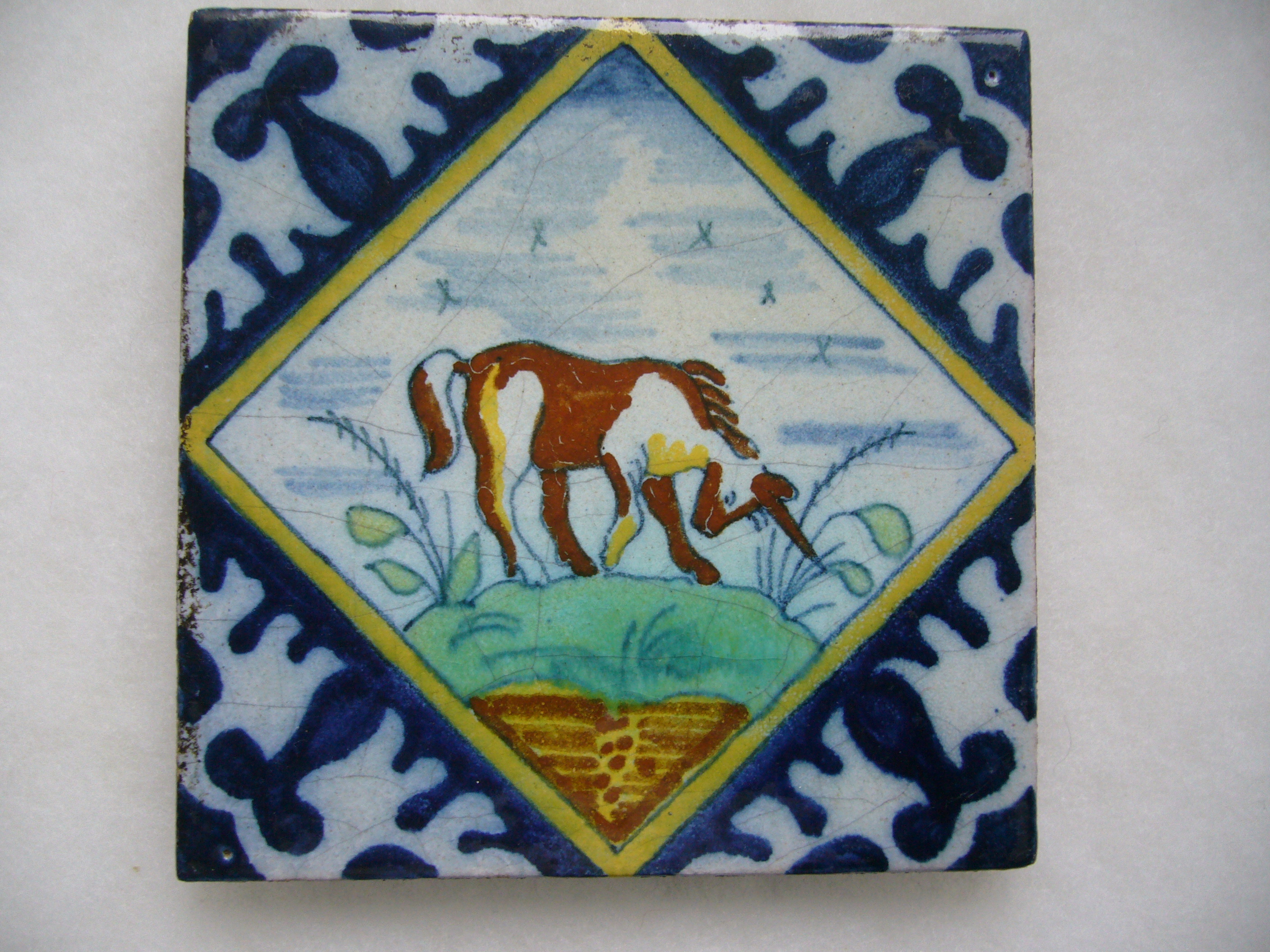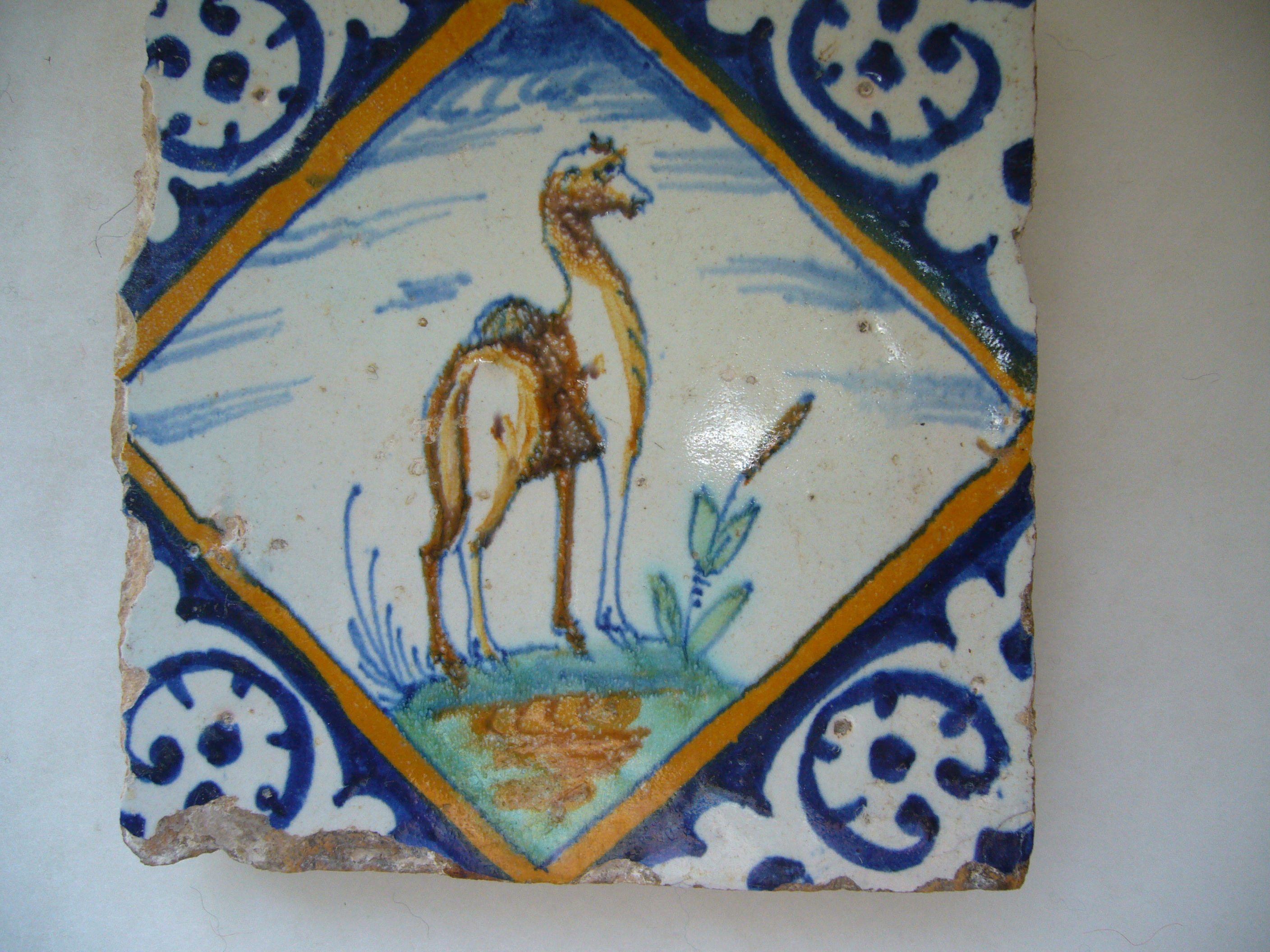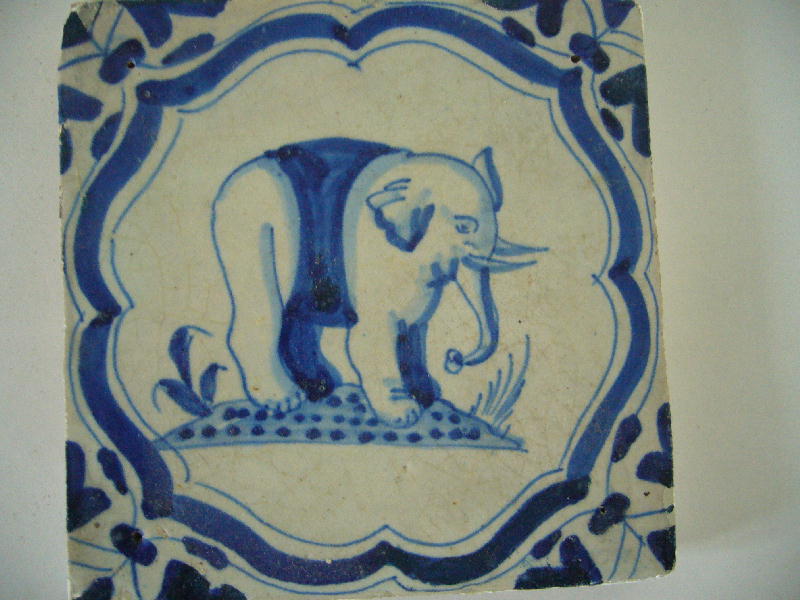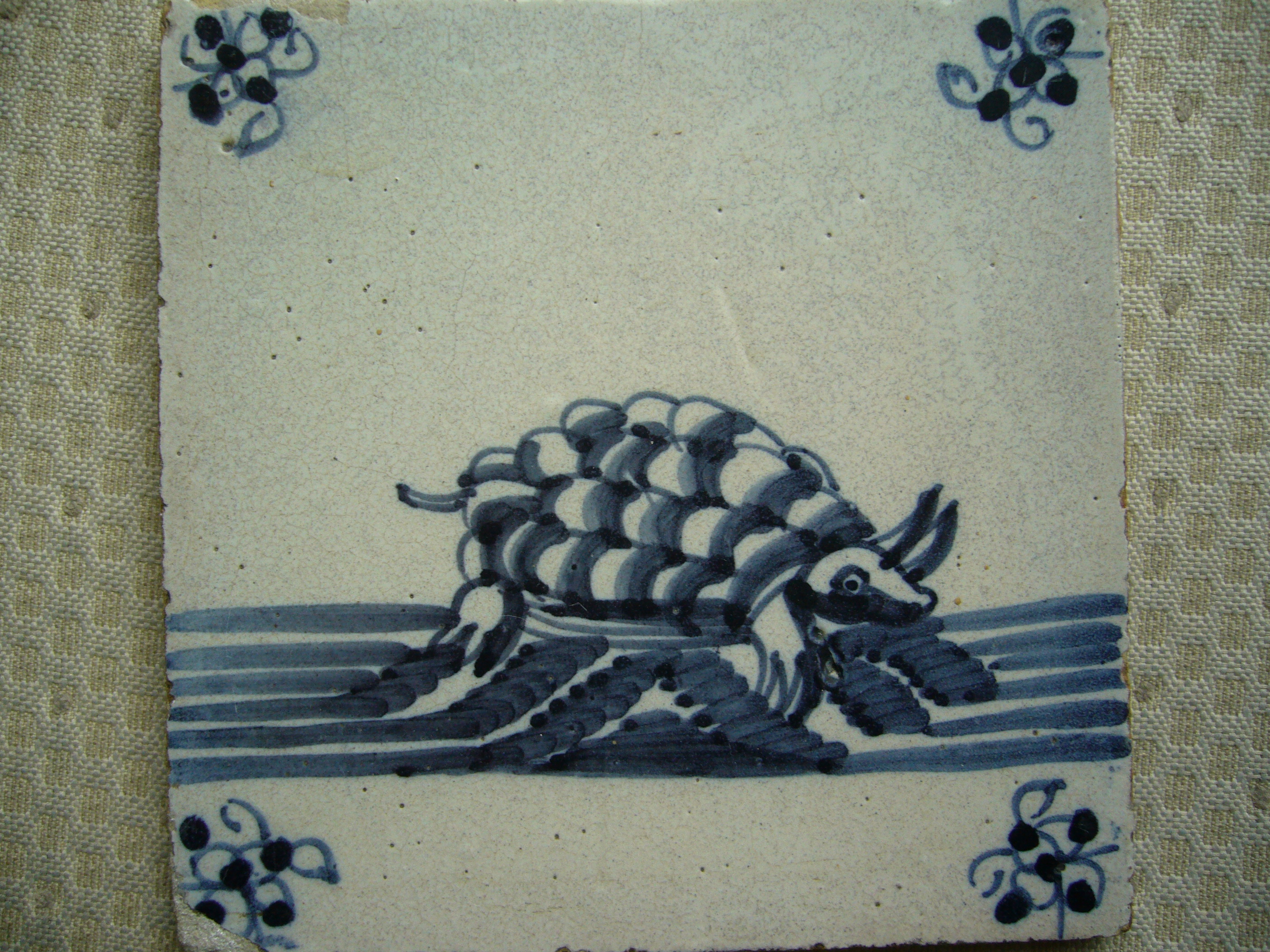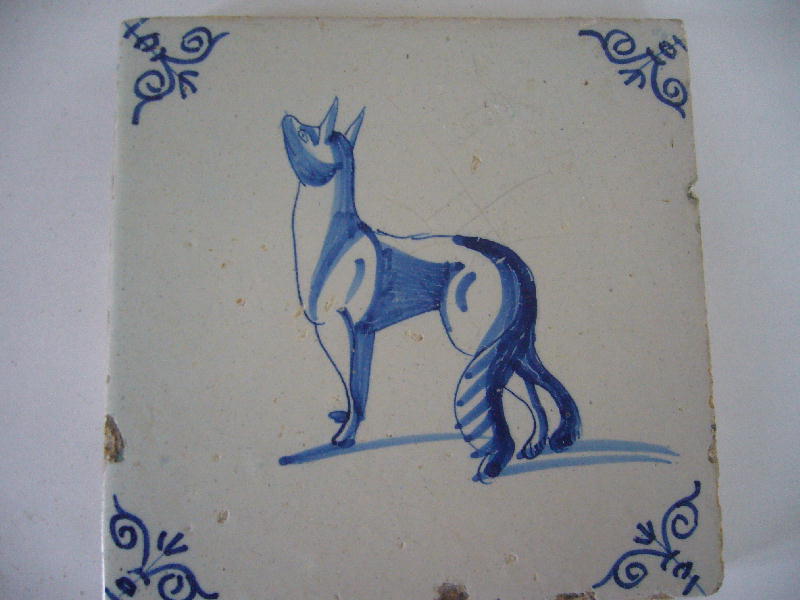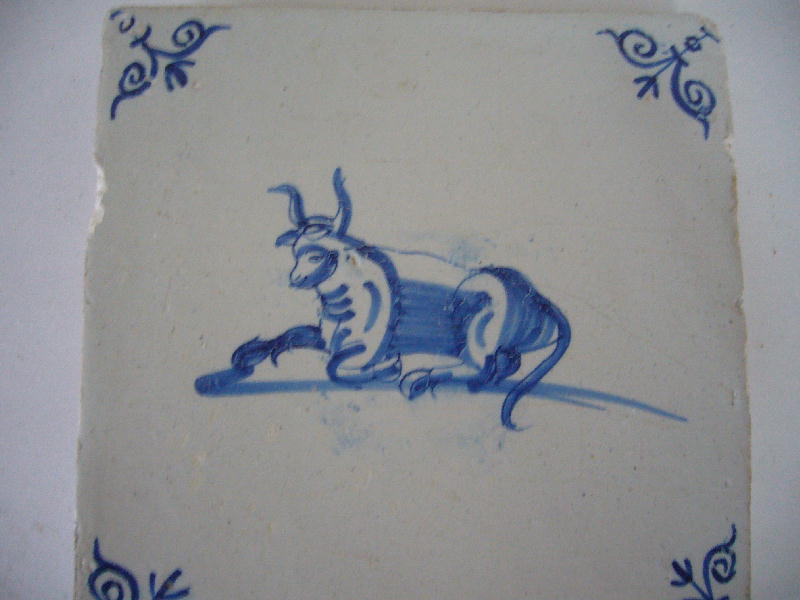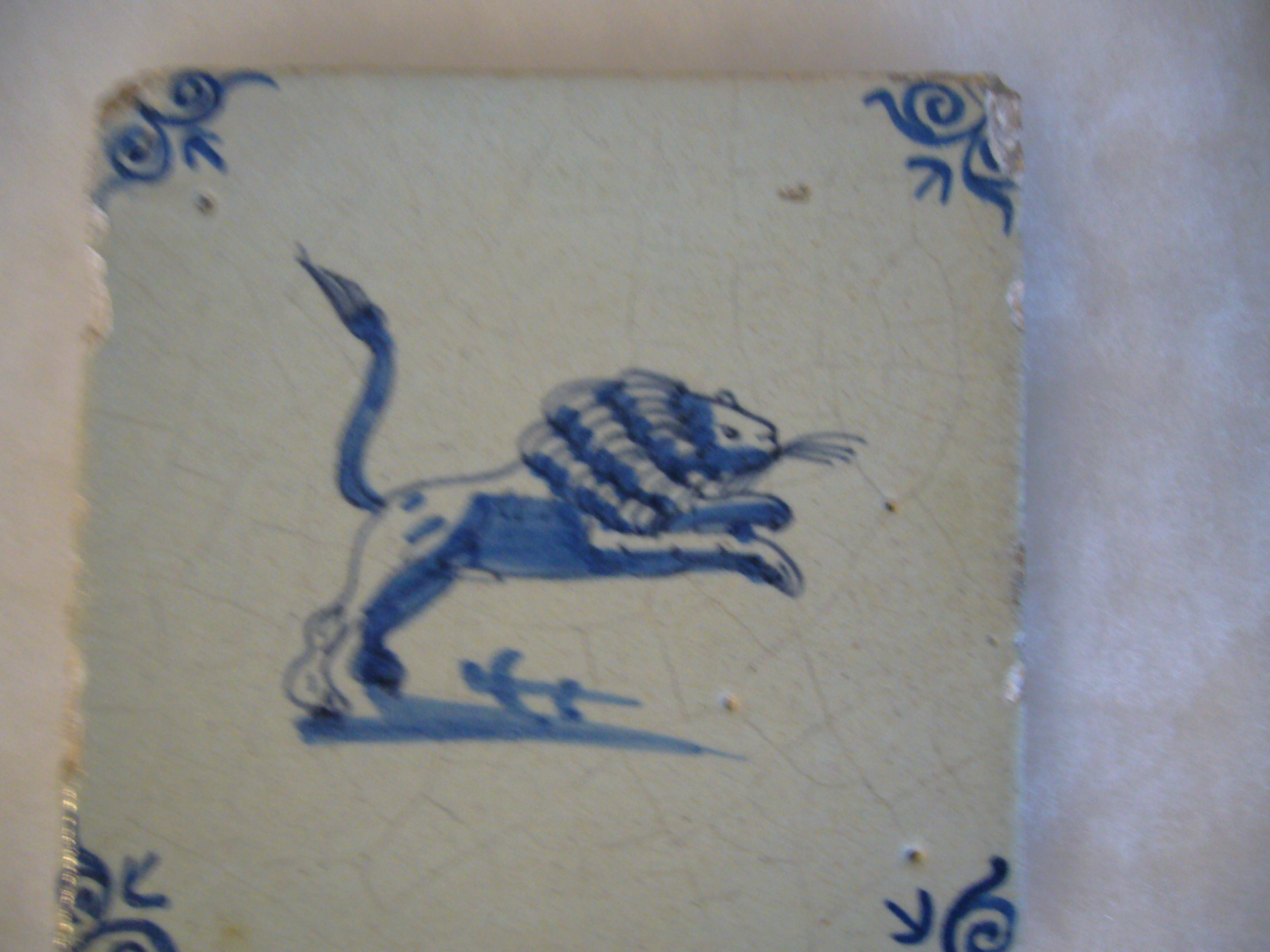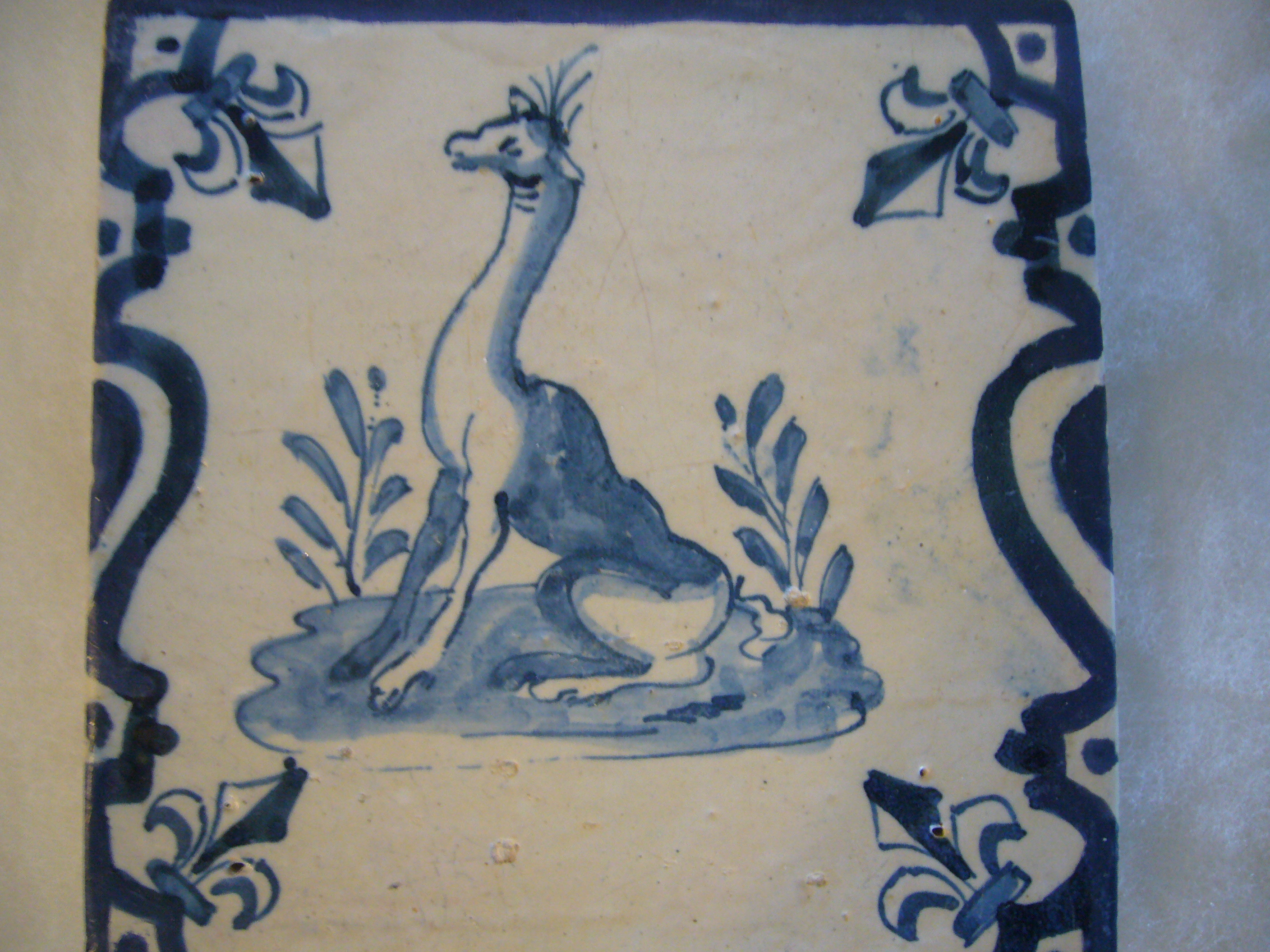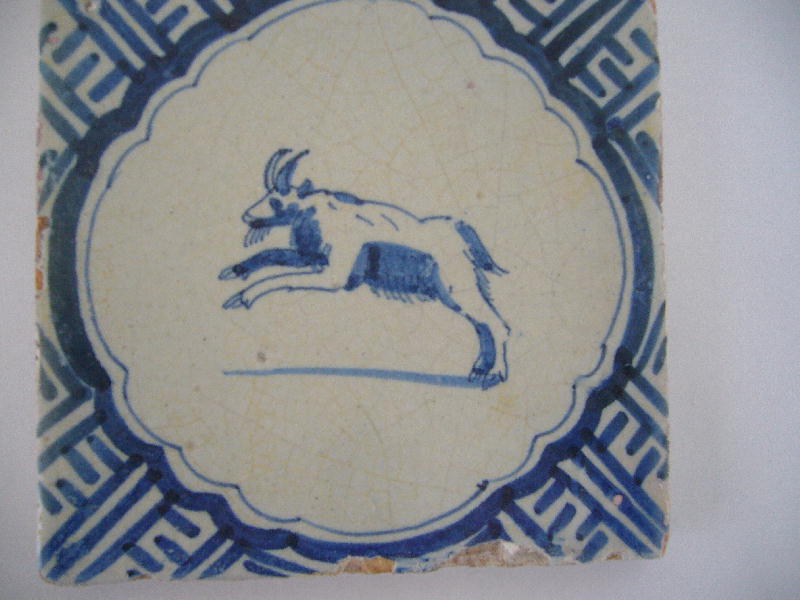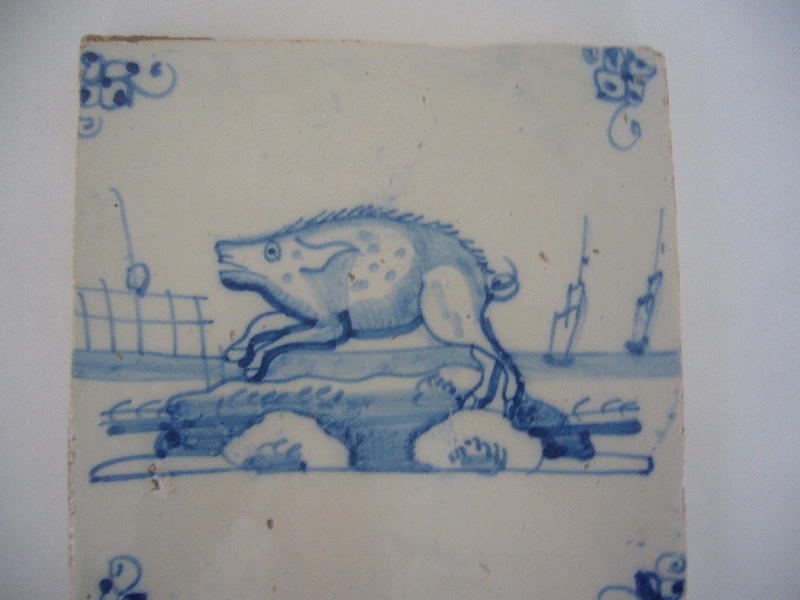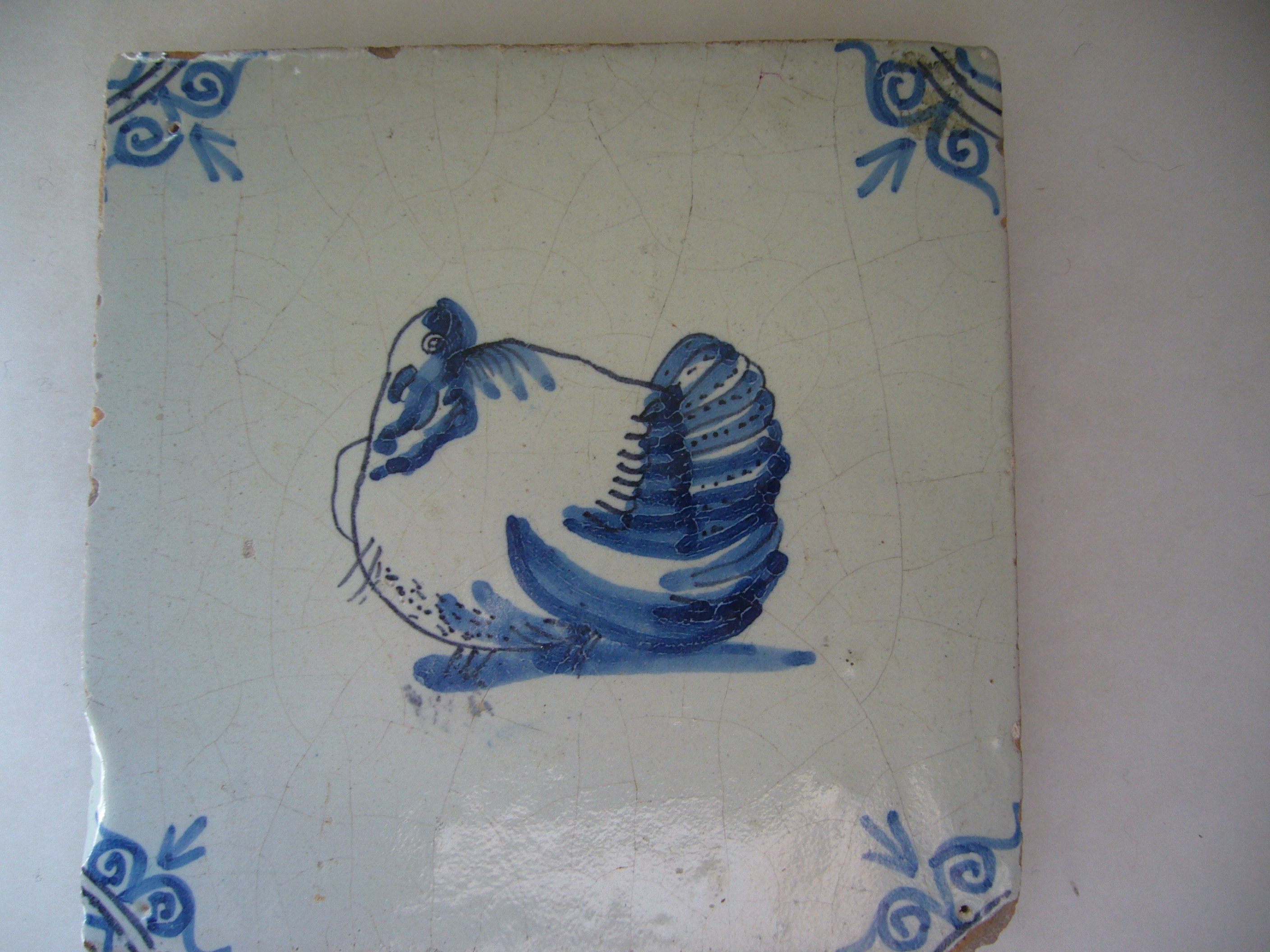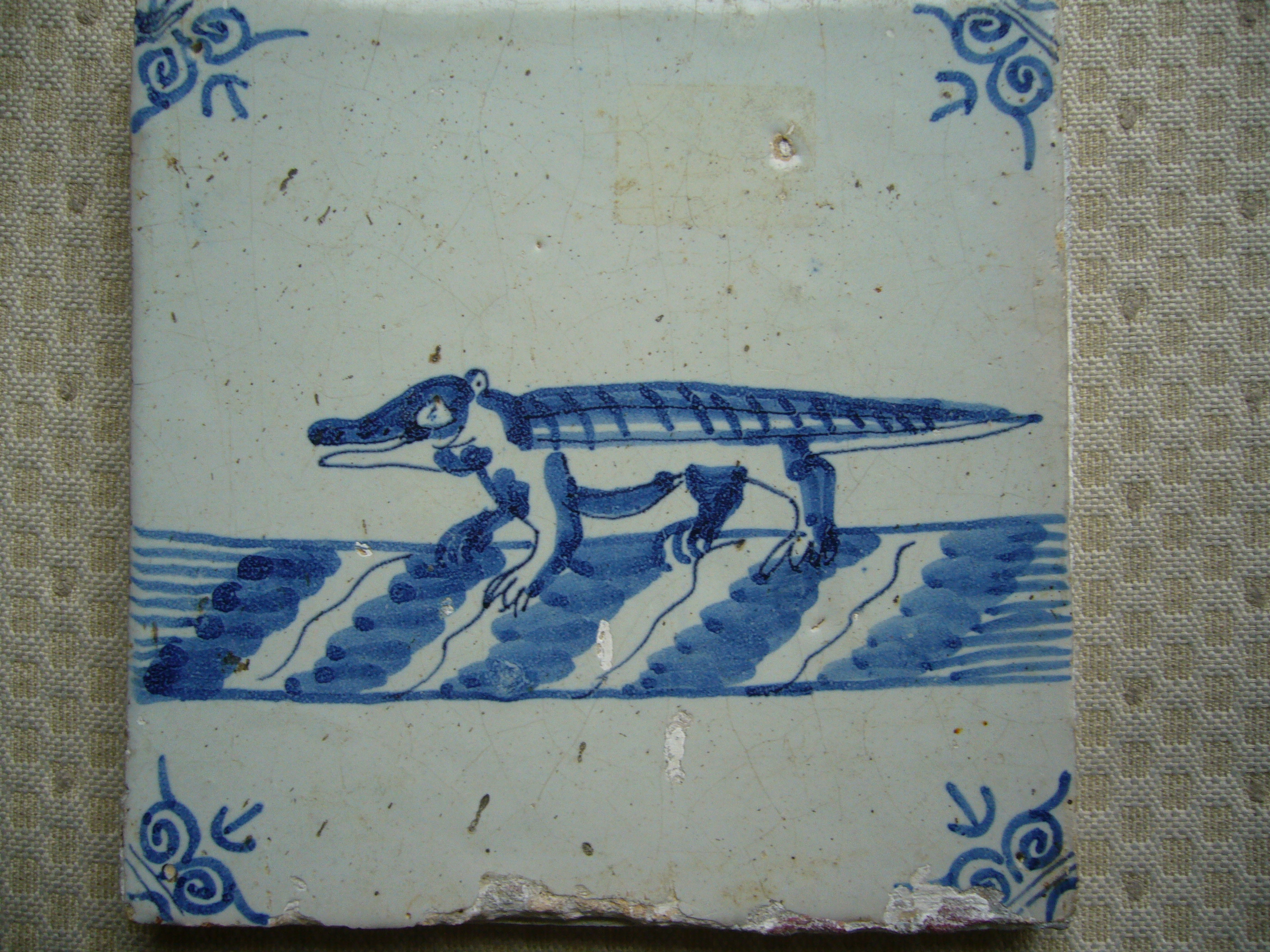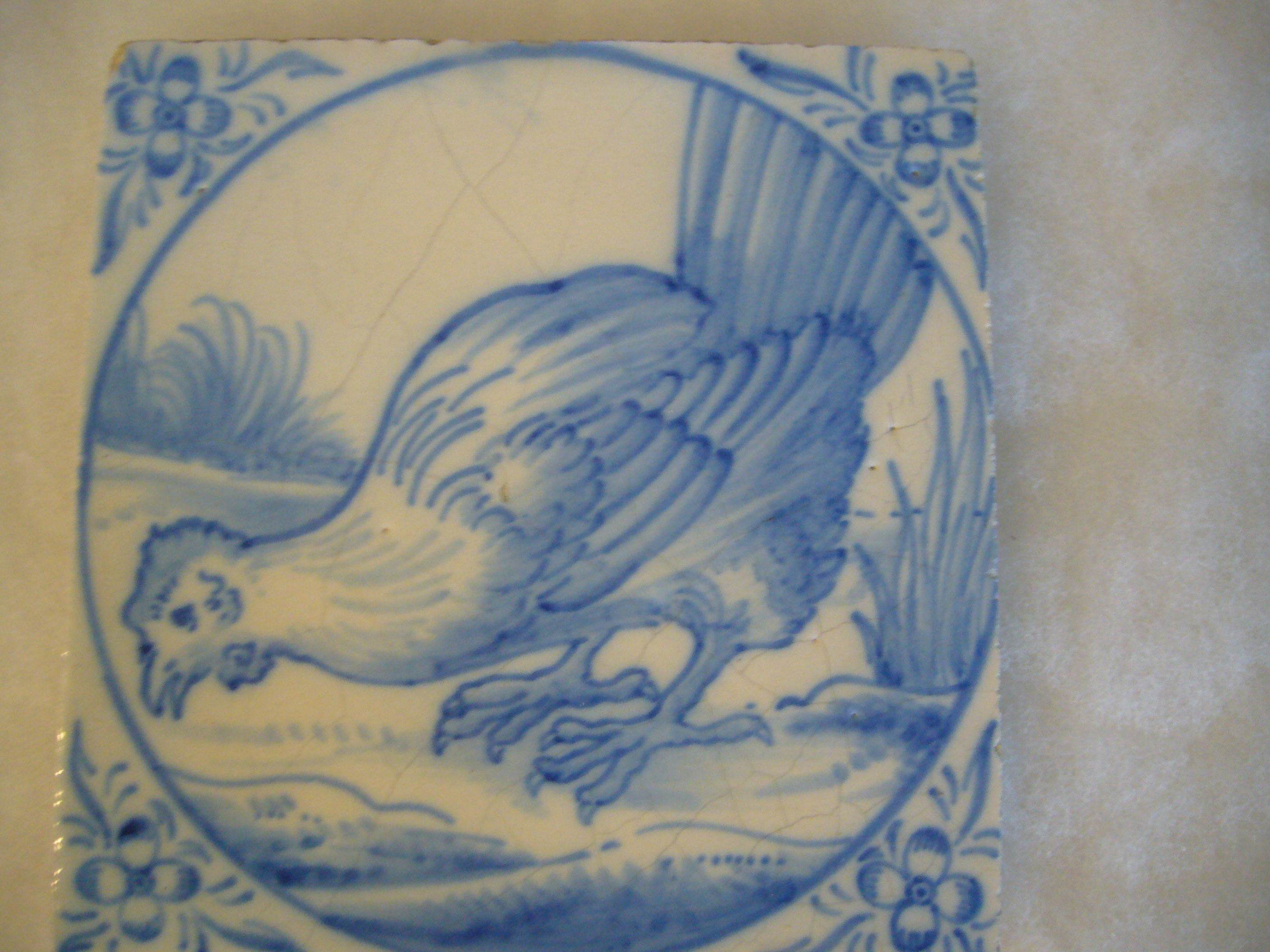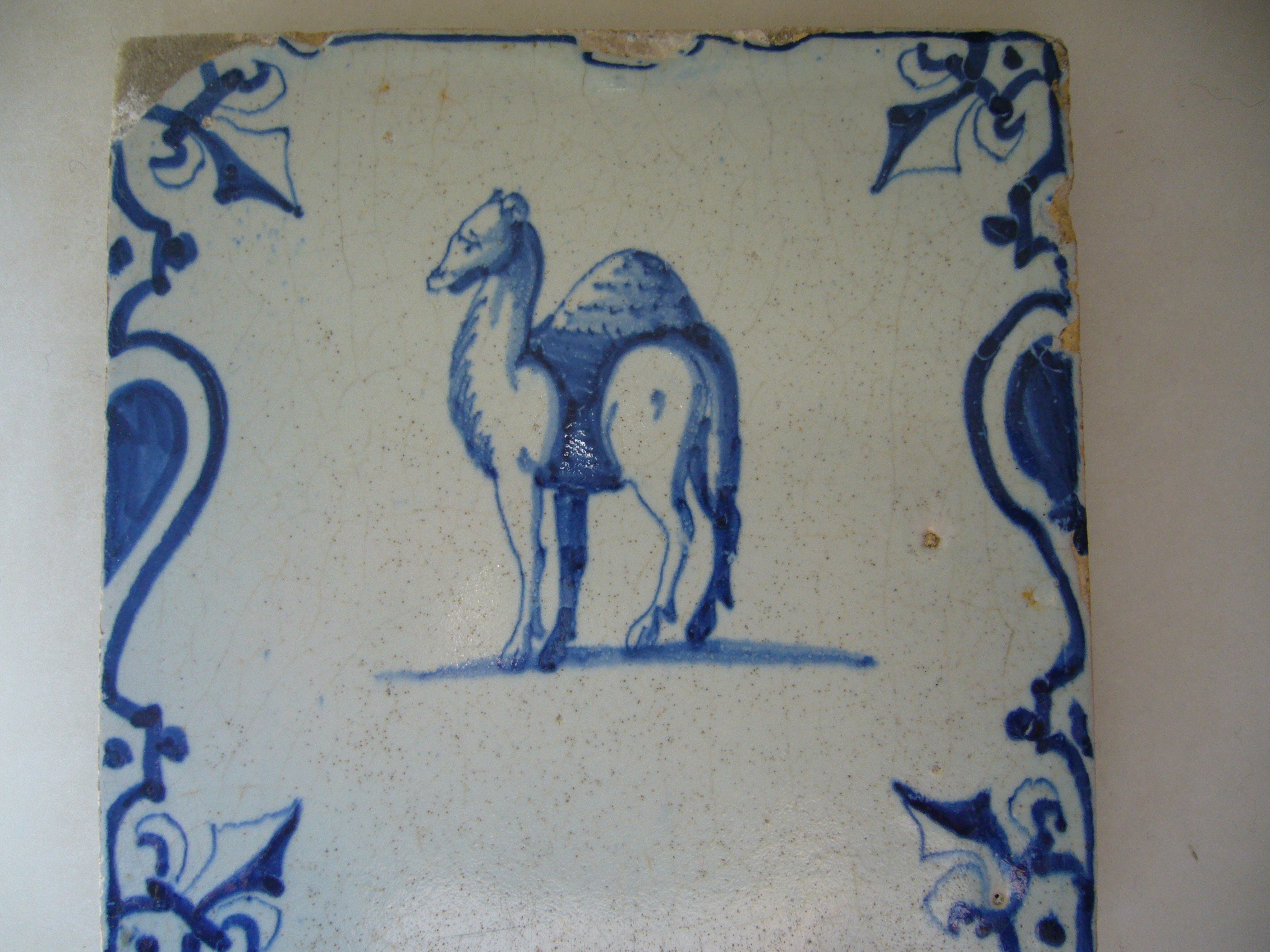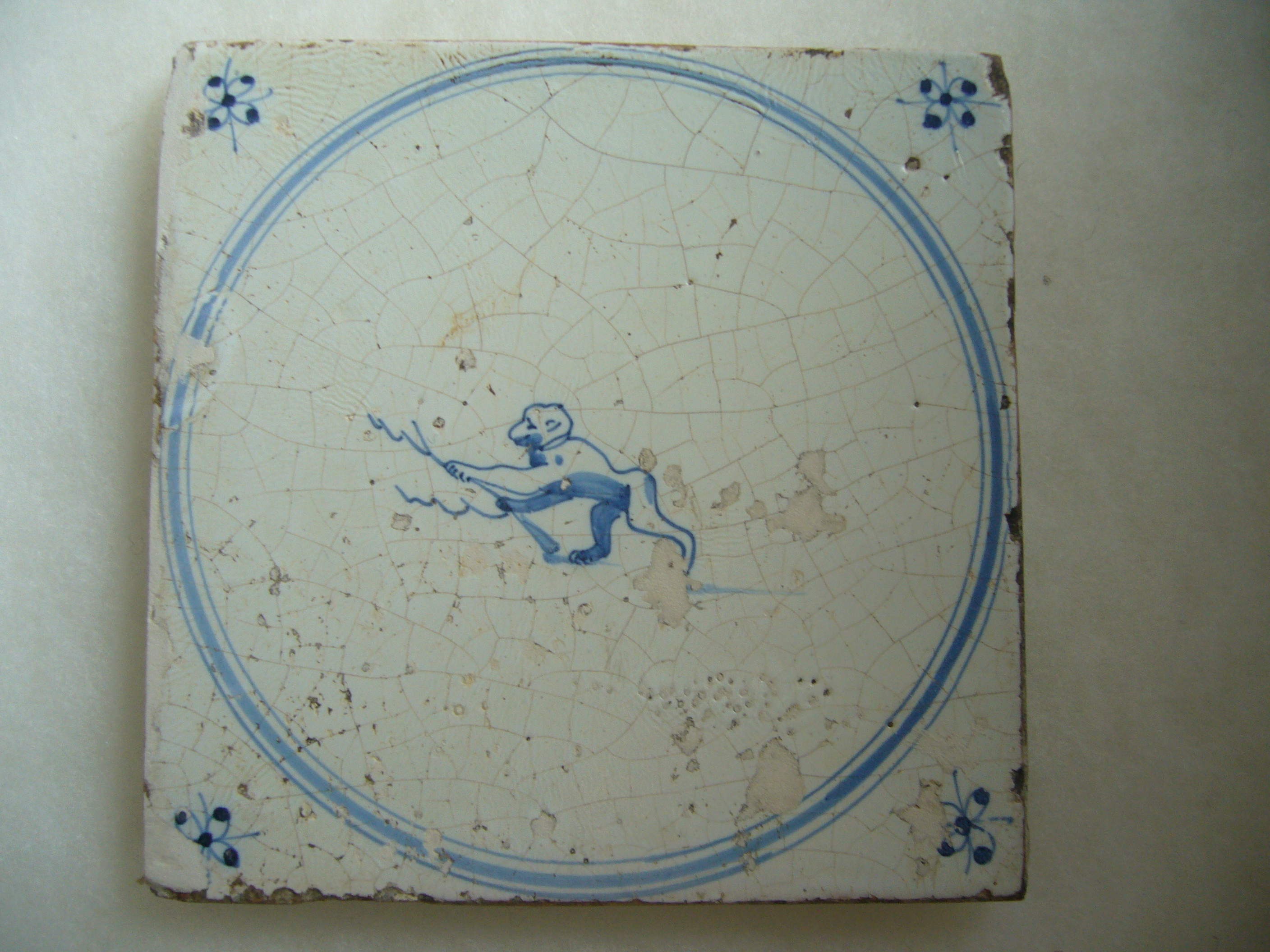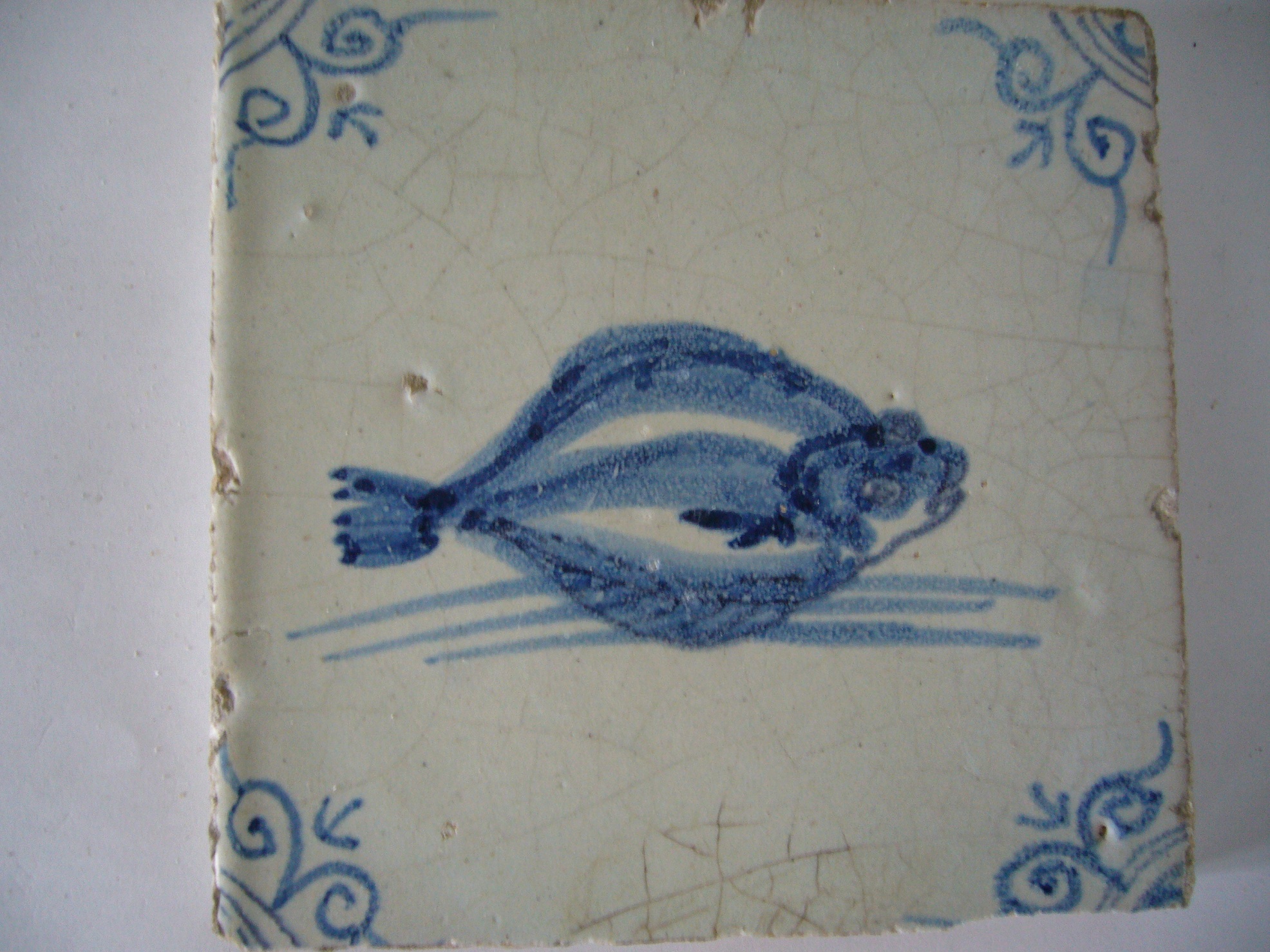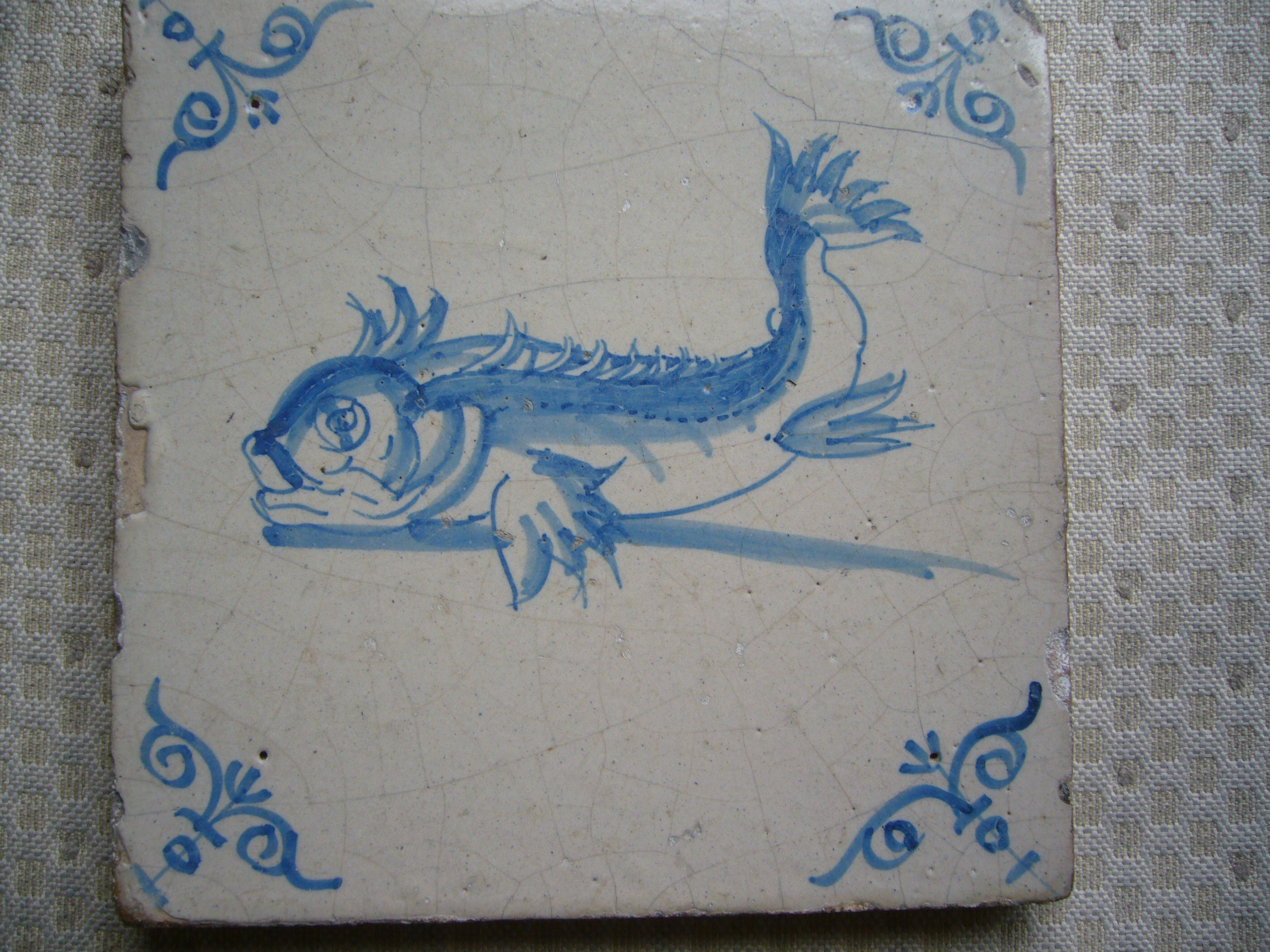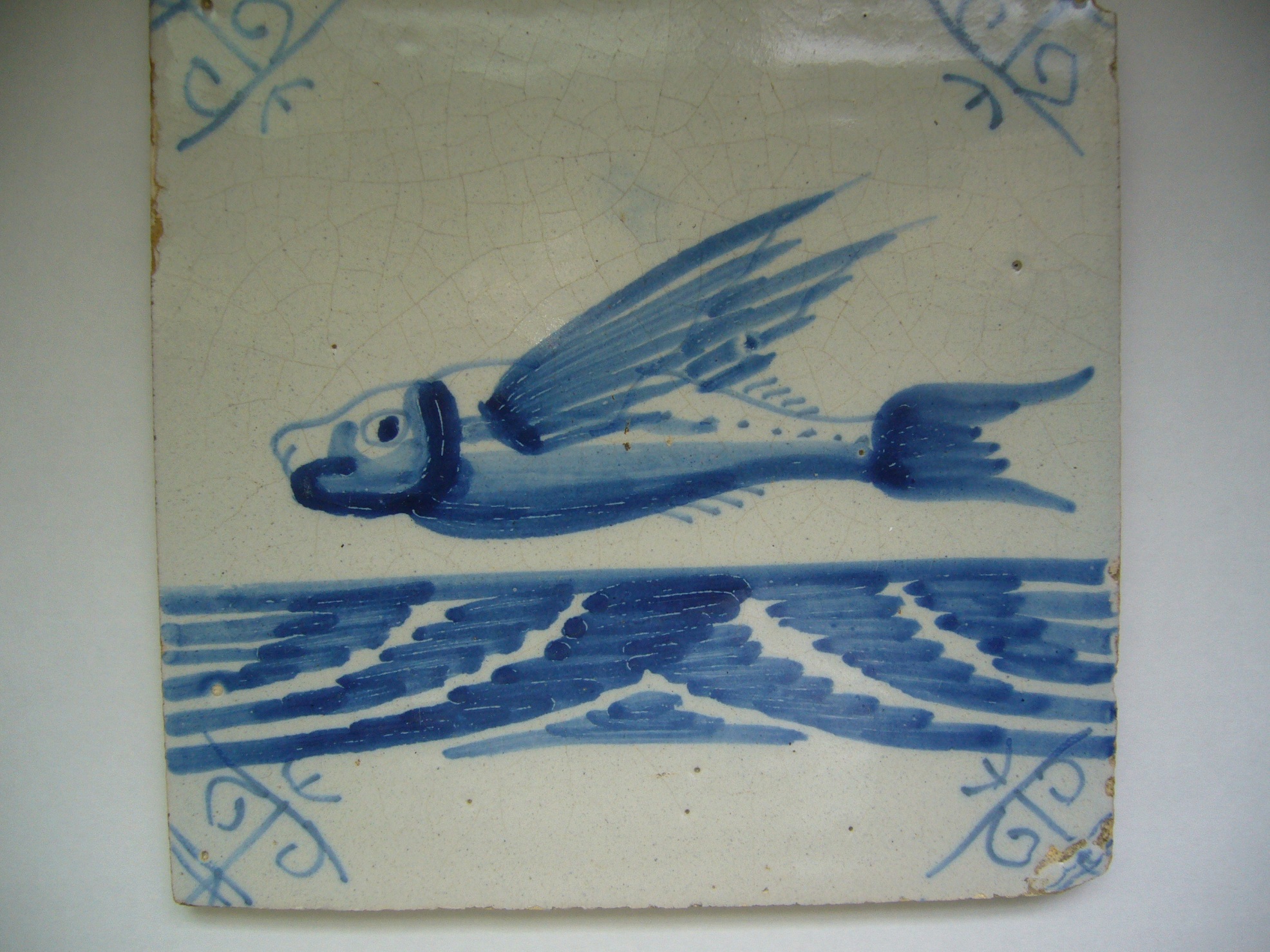Delft Tile is attarctive with variety of its decor. Many early tiles are polychrome with animal or floral design. This is influenced by majorica style tiles imported from Italy. Thereafter various kinds of decor such as animal, plant, citizen, child's play, biblical subject and warrior etc. were depicted, which makes us remind of daily life of Dutch people in times when tiles were made. In the beginning tile design reflected the taste of urban people who bought tiles, however as primary buyers of tiles were shifted to rich farmland people after 1700, decors such as VOC ships or sea-creatures increased reflecting their favors.
Design of Delft Tile is patterned so it is difficult to determine the manufactured time from the design. A manufacturing process of Delft Tile is as follows: making tilebiscuit, dipping tile surface into tin-graze liquid, drying, painting and second baking. In painting process, the design is pounced in charcol onto the surface of the tilebiscuit using a pricled stencil paper on which the design is depicted. Once the images are transferred to tiles in this way, a painter draws the line along the dotted points. At last the detailed image like a shadow is added. Thus as long as the same stencil paper is used, tiles with same decor have been continueously manufactured.
Early tiles were in many cases polychrome, however around 1620 the blue and white tiles became favored being influenced by Chinese porcelain Dutch East India Company imported. In 18th century purple-brown colored tiles called Manganese were brought in the market. Many biblical tiles are painted in Manganese. In the second half of 17th century polychrome tiles gained popularity again since farmland people who became major buyers of tiles preferred polychrome tiles. Polychrome tiles made in this time are lead grazed so the color became more vivid compared with early polychrome tiles.
Flower Vase
A design of flower vase is very popular as well as tulip design. In some cases human face is painted on a flower vase.
Flower
Tulip was brought in Netherland from Turkey in 16th century and tulip became a flower representing Netherland through the improvement of breed. In some cases the color of tulip painted on tiles is not real color.
There are many flowers other than tulip.
Fruit Basket is also popular.
Animal
Early polycrome animal tiles imitated designs of Majolica Tiles imported from Italy.
Although a dog is popular, there are many animals: Elephant, Lion, Deer, Rabbit, Bear, Boar etc. Animal designs were copied from lithogrphs or prints that was available when those tiles were made. Some animal faces are painted like human faces, with which tile craftman's humour is felt.
Fish
Fish design is less various compared with plants or animals.
If you click a photo, it will be enlarged.
